Upcoming Summer 2024 Application Deadline is May 12, 2024.
Click here to apply.


Featured Posts
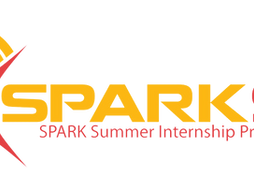
10 Software Engineering Programs for High School Students

8 ICEF Conferences You Should Be Attending as an Educational Consultant

11 Ways to Use AI Ethically in the College Admissions Process

NYU's Science and Technology Entry Program (STEP) - Our Review

10 Animation Summer Programs for High School Students
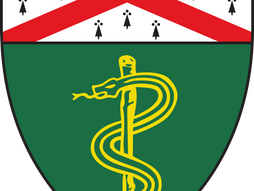
Discovery to Cure (DTC) High School Internship - Is It Worth It?
PCACAC's 2024 Conference - Should You Attend It?
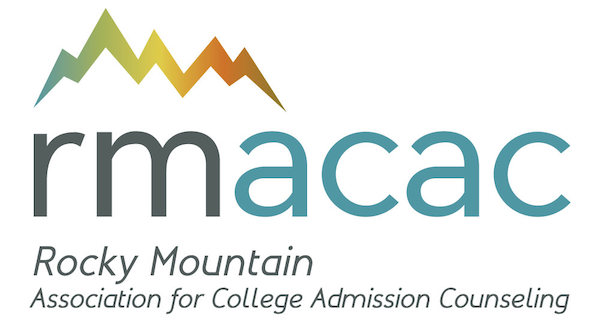
RMACAC's Conference in 2024 - Should You Attend?

CEISMC's Summer P.E.A.K.S Program At Georgia Tech - Is It Worth It?

10 Kinesiology Summer Programs for High School Students
10 Great Research Topics for Middle School Students
Middle school is the perfect time to start exploring the fascinating world of research, especially if you're passionate about STEM and the humanities. Engaging in research projects now not only feeds your curiosity but also develops critical thinking, problem-solving skills, and a love for learning. Whether you're intrigued by the secrets of the universe, the beauty of numbers, or the complexity of robotics, there's a research project that you can pursue to help you build your knowledge. Let's dive into some advanced yet accessible research topics that will challenge you and enhance your academic journey.
1. Program your own robot
What to do: Start by defining the purpose of your robot. Will it be a pet robot that follows you around, or perhaps a robot that can help carry small items from one room to another? Sketch your design on paper, focusing on what sensors and motors you'll need. For instance, a robot that follows light might need light sensors, while a robot that avoids obstacles will require ultrasonic sensors. Use an Arduino or Raspberry Pi as the brain. You'll need to learn basic programming in Python (for Raspberry Pi) or C++ (for Arduino) to code your robot's behavior.
Tips to get started: The official websites for Arduino and Raspberry Pi offer tutorials for beginners. For more specific projects, such as building a pet robot, search for guides on Instructables that detail each step from hardware assembly to software programming.
2. Design a solar-powered oven
What to do: Investigate how solar ovens work and the science behind solar cooking. Your oven can be as simple as a pizza box solar oven or more complex, like a parabolic solar cooker. Key materials include reflective surfaces (aluminum foil), clear plastic wrap to create a greenhouse effect, and black construction paper to absorb heat. Experiment with different shapes and angles to maximize the heat capture and cooking efficiency. Test your oven by trying to cook different foods and measure the temperature achieved and cooking time required.
Tips to get started: The Solar Cooking wiki is an excellent resource for finding different solar cooker designs and construction plans. YouTube also has numerous DIY solar oven tutorials. Document your process and results in a project journal, noting any changes in design that lead to improvements in efficiency.
3. Assess the health of a local ecosystem
What to do: Choose a local natural area, such as a stream, pond, or forest, and plan a series of observations and tests to assess its health. Key activities could include water quality testing (for pH, nitrates, and phosphates), soil testing (for composition and contaminants), and biodiversity surveys (identifying species of plants and animals present). Compile your data to evaluate the ecosystem's health, looking for signs of pollution, habitat destruction, or invasive species.
Tips to get started: For a comprehensive approach, NOAA’s Global Monitoring Laboratory provides information on atmospheric and environmental monitoring techniques. Tools like iNaturalist can assist in species identification, and water and soil testing kits are available from science education suppliers.
4. Develop an educational app
What to do: Identify a gap in educational resources that your app could fill. Perhaps you noticed that students struggle with a particular math concept, or there's a lack of engaging resources for learning a foreign language. Outline your app’s features, design the user interface, and plan the content it will deliver. Use MIT App Inventor for a drag-and-drop development experience, or Scratch for a game-like educational app. Test your app with classmates or family members, and use their feedback for improvements.
Tips to get started: Both MIT App Inventor and Scratch provide tutorials and community forums where you can learn from others’ projects. Begin with a simple prototype, focusing on one core feature, and expand from there.
5. Model rocketry: design, build, and launch!
What to do: Dive into the basics of rocket science by designing your own model rocket. Understand the principles of thrust, aerodynamics, and stability as you plan your rocket. Materials can range from simple kits available online to homemade components for the body, fins, and nose cone. Educate yourself on the proper engine selection for your design and the recovery system to ensure your rocket returns safely. Conduct a launch in a safe, open area, following all safety guidelines.
Tips to get started: The National Association of Rocketry is a treasure trove of information on model rocket safety, design, and launch procedures. For beginners, consider starting with a kit from Estes Rockets , which includes all necessary components and instructions.
6. Create a wearable electronic device
What to do: Envision a wearable device that solves a problem or enhances an aspect of daily life. It could be a smart bracelet that reminds you to stay hydrated or a hat with integrated LEDs for nighttime visibility. Sketch your design, listing the components you'll need, such as LEDs, sensors, a power source, and a microcontroller like the Adafruit Flora or Gemma. Plan your circuit, sew or assemble your device, and program it to function as intended.
Tips to get started: Adafruit’s Wearables section offers guides and tutorials for numerous wearable projects, including coding and circuit design. Start with a simple project to familiarize yourself with electronics and sewing conductive thread before moving on to more complex designs.
7. Explore the science of slime and non-Newtonian fluids
What to do: Conduct experiments to understand how the composition of slime affects its properties. Create a standard slime recipe using glue, borax (or contact lens solution as a safer alternative), and water. Alter the recipe by varying the amounts of each ingredient or adding additives like cornstarch, shaving cream, or thermochromic pigment. Test how each variation affects the slime’s viscosity, stretchiness, and reaction to pressure.
Tips to get started: The Science Bob website offers a basic slime recipe and the science behind it. Document each experiment carefully, noting the recipe used and the observed properties. This will help you understand the science behind non-Newtonian fluids.
8. Extract DNA at home
What to do: Use common household items to extract DNA from fruits or vegetables, like strawberries or onions. The basic process involves mashing the fruit, adding a mixture of water, salt, and dish soap to break down cell membranes, and then using cold alcohol to precipitate the DNA out of the solution. Observe and analyze the DNA strands.
Tips to get started: Detailed instructions and the science explanation are available at the Genetic Science Learning Center . This project offers a tangible glimpse into the molecular basis of life and can be a springboard to more complex biotechnology experiments.
9. Investigate the efficiency of different types of solar cells
What to do: Compare the efficiency of various solar panels, such as monocrystalline, polycrystalline, and thin-film. Design an experiment to measure the electrical output of each type under identical lighting conditions, using a multimeter to record voltage and current. Analyze how factors like angle of incidence, light intensity, and temperature affect their performance.
Tips to get started: Introductory resources on solar energy and experiments can be found at the Energy.gov website. Consider purchasing small solar panels of different types from electronics stores or online suppliers. Ensure that all tests are conducted under controlled conditions for accurate comparisons.
10. Study ocean acidification and its effects on marine life
What to do: Simulate the effects of ocean acidification on marine organisms in a controlled experiment. Use vinegar to lower the pH of water in a tank and observe its impact on calcium carbonate shells or skeletons, such as seashells or coral fragments. Monitor and record changes over time, researching how acidification affects the ability of these organisms to maintain their shells and skeletons.
Tips to get started: NOAA’s Ocean Acidification Program offers educational materials and experiment ideas. For a simpler version of this experiment, see instructions for observing the effects of acidified water on eggshells, which are similar in composition to marine shells, at educational websites like Science Buddies .
By pursuing these projects, you will not only gain a deeper understanding of STEM principles but also develop invaluable skills in research, design, and critical analysis. These projects will teach you how to question, experiment, and innovate, laying the groundwork for future scientific inquiries and discoveries.
One other option – Lumiere’s Junior Explorer Program
The Lumiere Junior Explorer Program is a program for middle school students to work one-on-one with a mentor to explore their academic interests and build a project they are passionate about . Our mentors are scholars from top research universities such as Harvard, MIT, Stanford, Yale, Duke and LSE.
The program was founded by a Harvard & Oxford PhD who met as undergraduates at Harvard. The program is rigorous and fully virtual. We offer need based financial aid for students who qualify. You can find the application in the brochure !
To learn more, you can reach out to our Head of Growth, Khushi Malde, at [email protected] or go to our website .
Multiple rolling deadlines for JEP cohorts across the year, you can apply using this application link ! If you'd like to take a look at the cohorts + deadlines for 2024, you can refer to this page!
Stephen is one of the founders of Lumiere and a Harvard College graduate. He founded Lumiere as a PhD student at Harvard Business School. Lumiere is a selective research program where students work 1-1 with a research mentor to develop an independent research paper.
- middle school students

40 Best Science Experiments & Projects for Middle School
Welcome to our curated collection of top science fair projects and experiments, perfectly tailored for the inquisitive middle schoolers. Our collection offers hands-on activities that will captivate young minds and ignite their passion for learning.
Science fairs during middle school years are less about competition and more about fostering a love for exploration, experimentation, and the thrill of the “Eureka!” moment. That’s why we have ensured that all the experiments on our list are fun and easy.
Through hands-on experimentation, students can gain a deeper understanding of scientific concepts, build confidence in their abilities, and cultivate a lifelong passion for learning.
1. Crushed Can
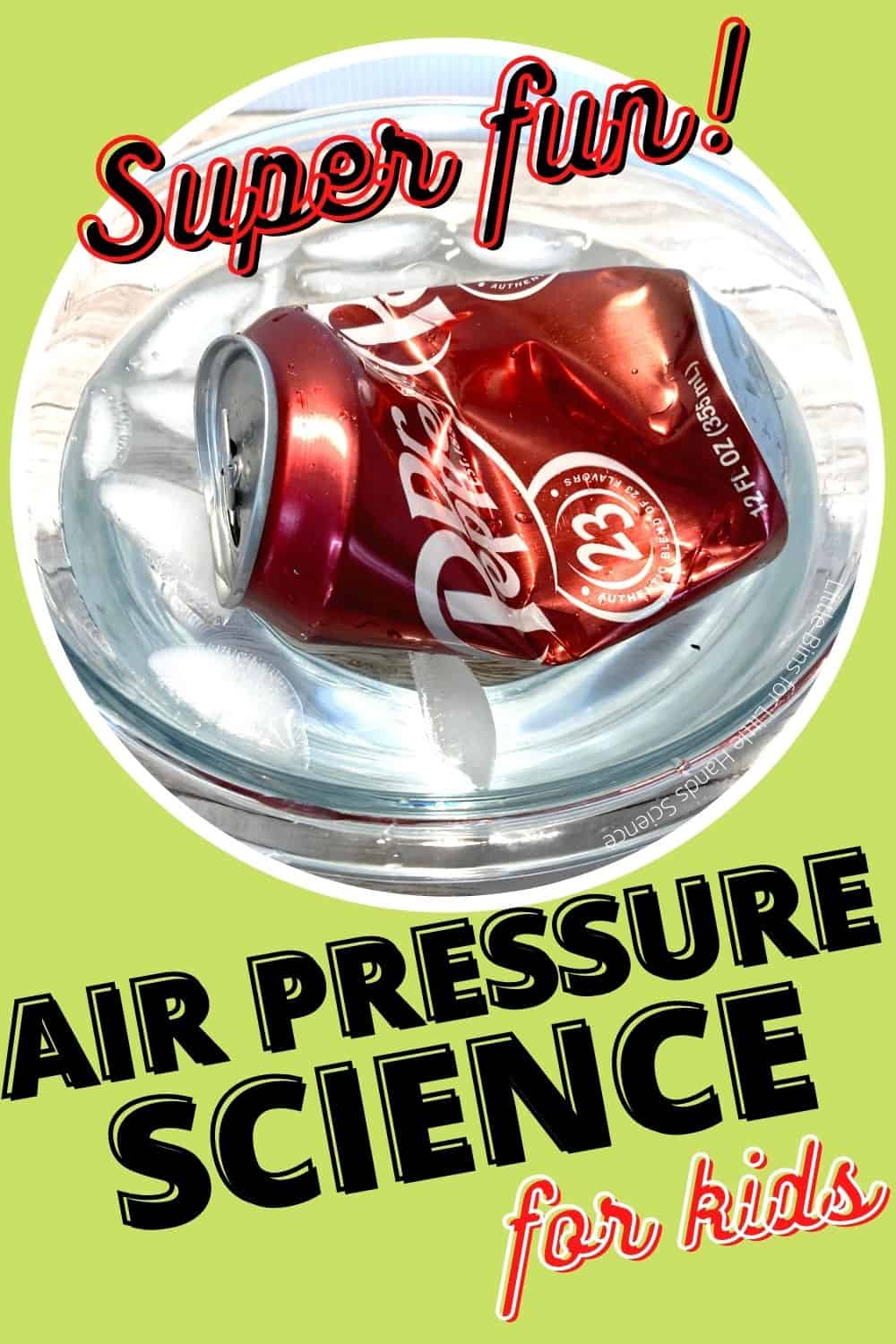
Students will be amazed as they witness an ordinary can being transformed before their very eyes. By simply heating it and then rapidly cooling it, the can will be crushed as if by magic!
Learn more: Little Bins Little Hands
2. Water Bottle Rockets
In this engaging activity, students will have the opportunity to design, build, and launch their very own water-propelled rockets.
By adjusting variables like water level and air pressure, they’ll witness firsthand how these factors impact the rocket’s flight path and distance.
3. Cabbage Ph Indicator
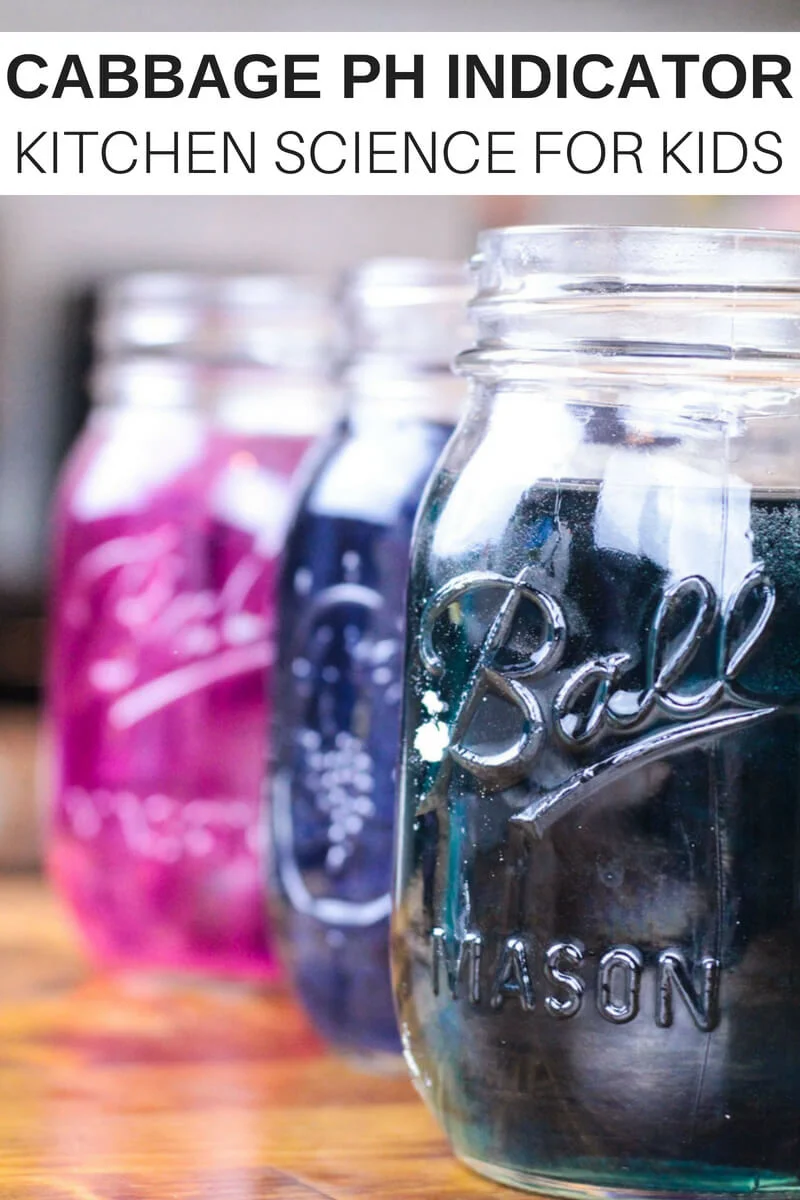
In this middle school science project, students will use red cabbage as a natural pH indicator to test the acidity or alkalinity of various household substances.
Learn more: Cabbage PH Indicator
4. Build a Solar Oven
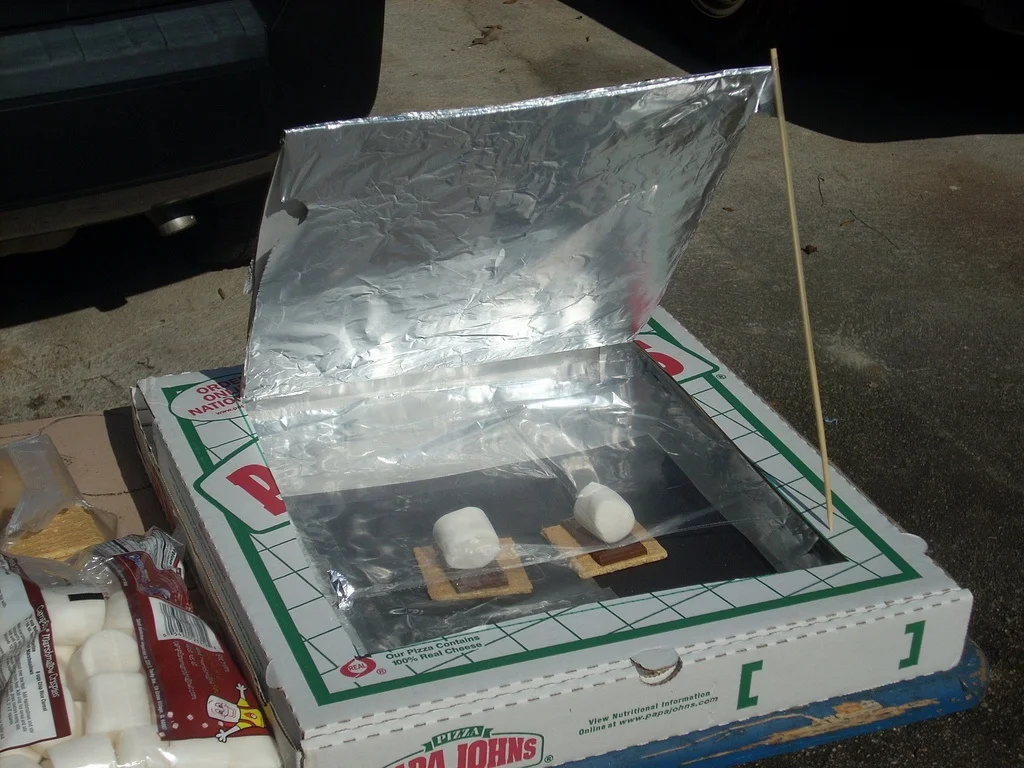
By building these ingenious devices using simple materials, they will discover the incredible potential of renewable energy and its practical applications in everyday life.
Learn more: Solar Oven
5. Build a Helping Hand
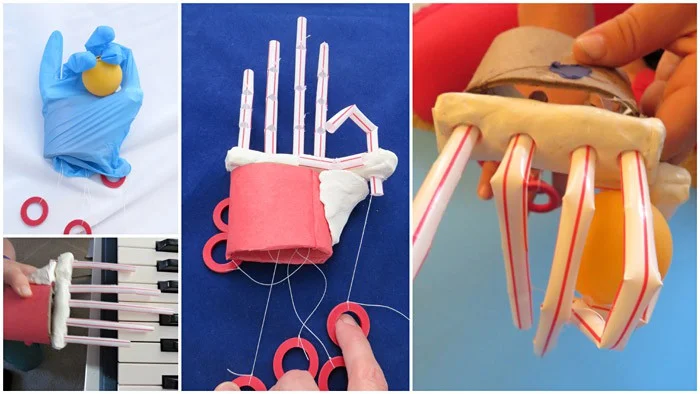
In this captivating middle school science experiment, students will have the opportunity to construct their very own “Helping Hand” device.
Learn more: Science Buddies
6. DIY Lung Model
This captivating middle school project offers an exciting hands-on opportunity to explore the inner workings of our respiratory system.
By creating their own lung models using simple household materials, students will gain a deeper understanding of how our lungs function and the vital role they play in our bodies.
7. Flying Tea Bag

By harnessing the power of convection currents, students will learn about the fascinating relationship between heat and air pressure.
Learn more: Flying Tea Bag
8. Egg Float Experiment
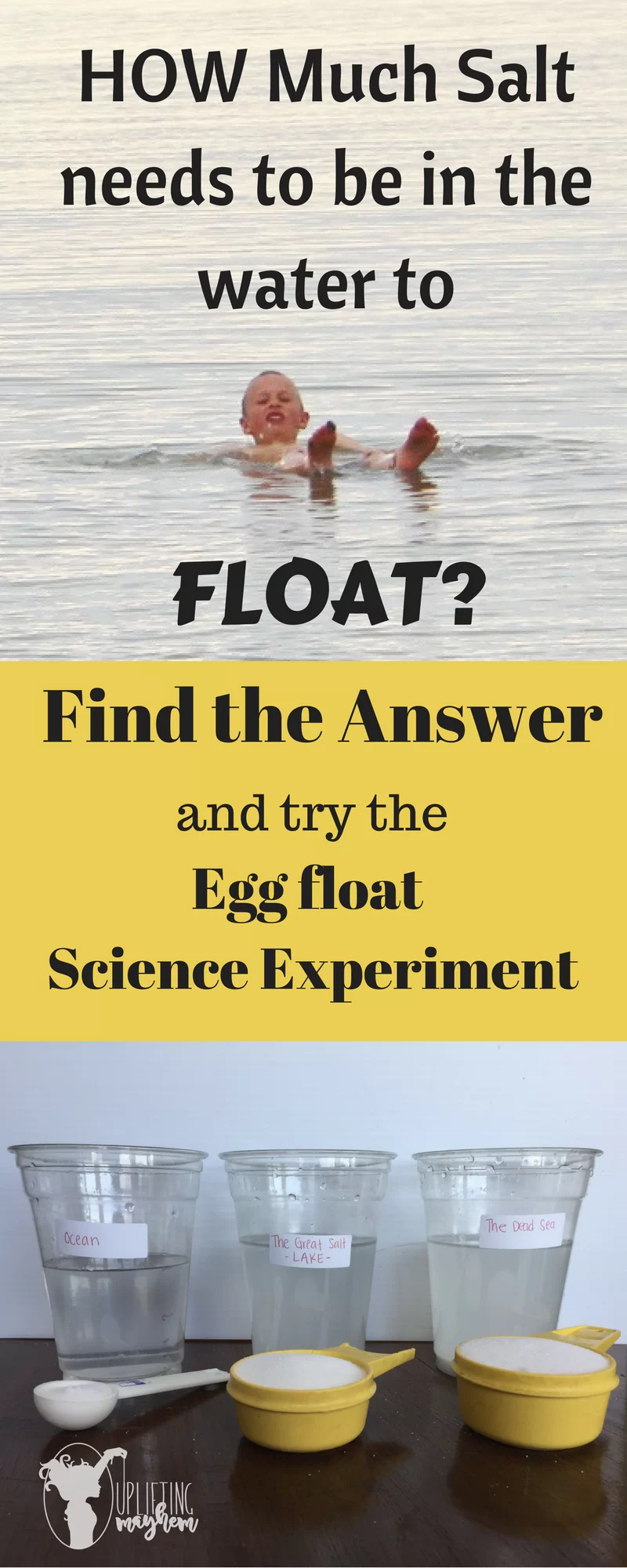
In this captivating middle school science project, students will unlock the mysteries of density and water displacement while discovering the fascinating properties of eggs.
Learn more: Egg Float Experiment
9. Popsicle Stick Chain Reaction
This captivating middle school project is all about the magic of potential energy and kinetic energy. By carefully setting up a series of interlinked popsicle sticks, students will create a mesmerizing chain reaction that ripples through the entire structure.
10. How to See Sound
As they watch sound come to life through colorful visualizations, students will develop a deeper appreciation for the profound impact of sound in our daily lives.
11. Orange Peel Plate Tectonics
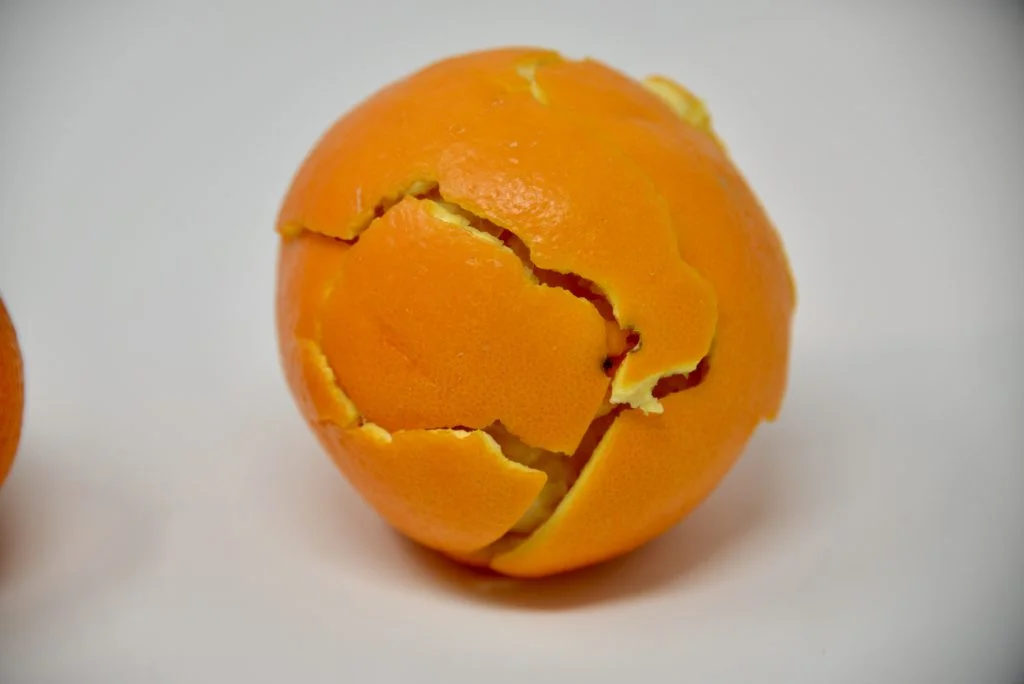
In this captivating middle school project, students will learn about the dynamic of Earth’s crust and explore the powerful forces that shape our planet’s surface.
12. Heart Pump
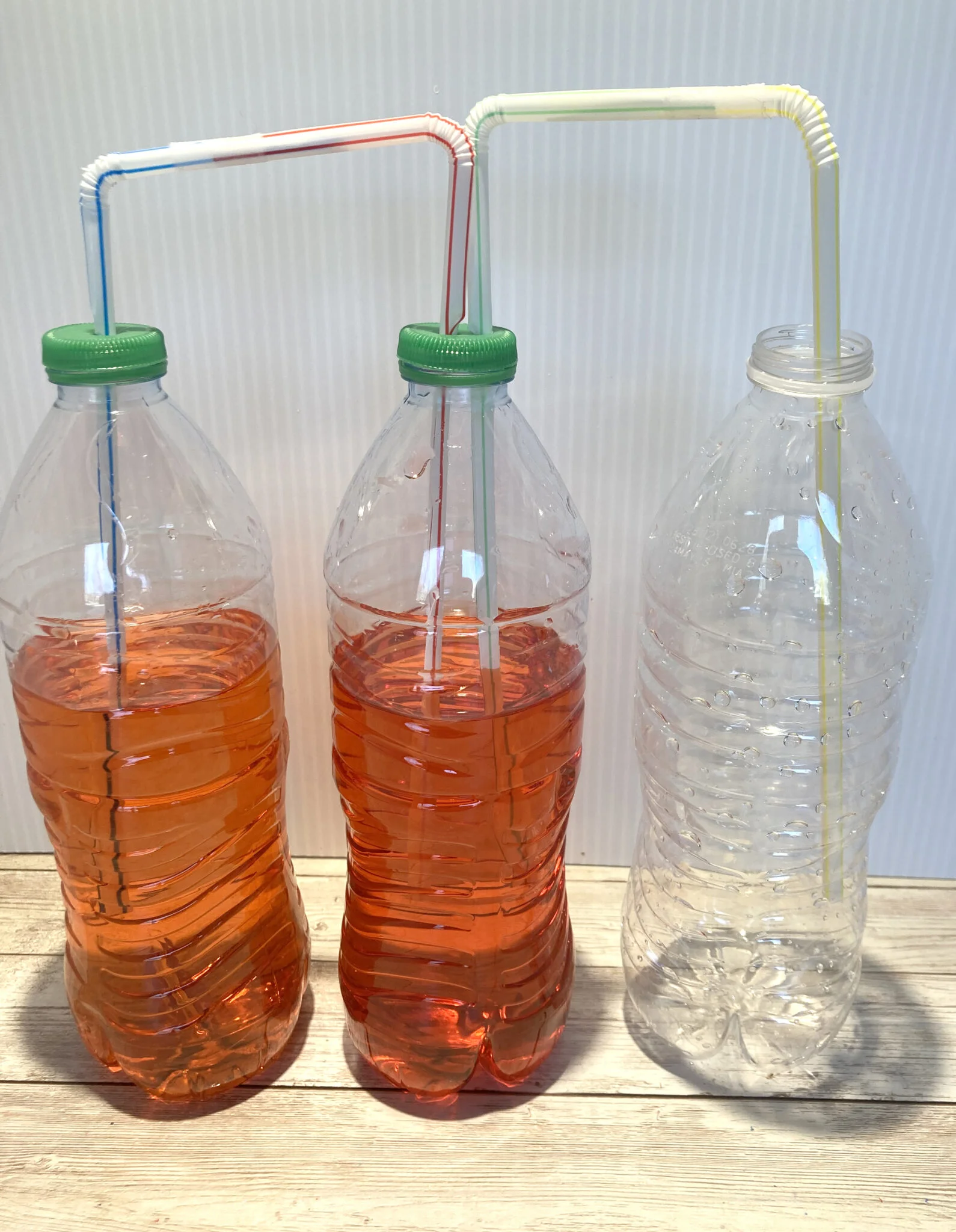
In this captivating middle school project, students will embark on a hands-on exploration of the human circulatory system and discover the marvels of the heart’s pumping mechanism.
Learn more: Heart Pump Model
13. Invisible Ink
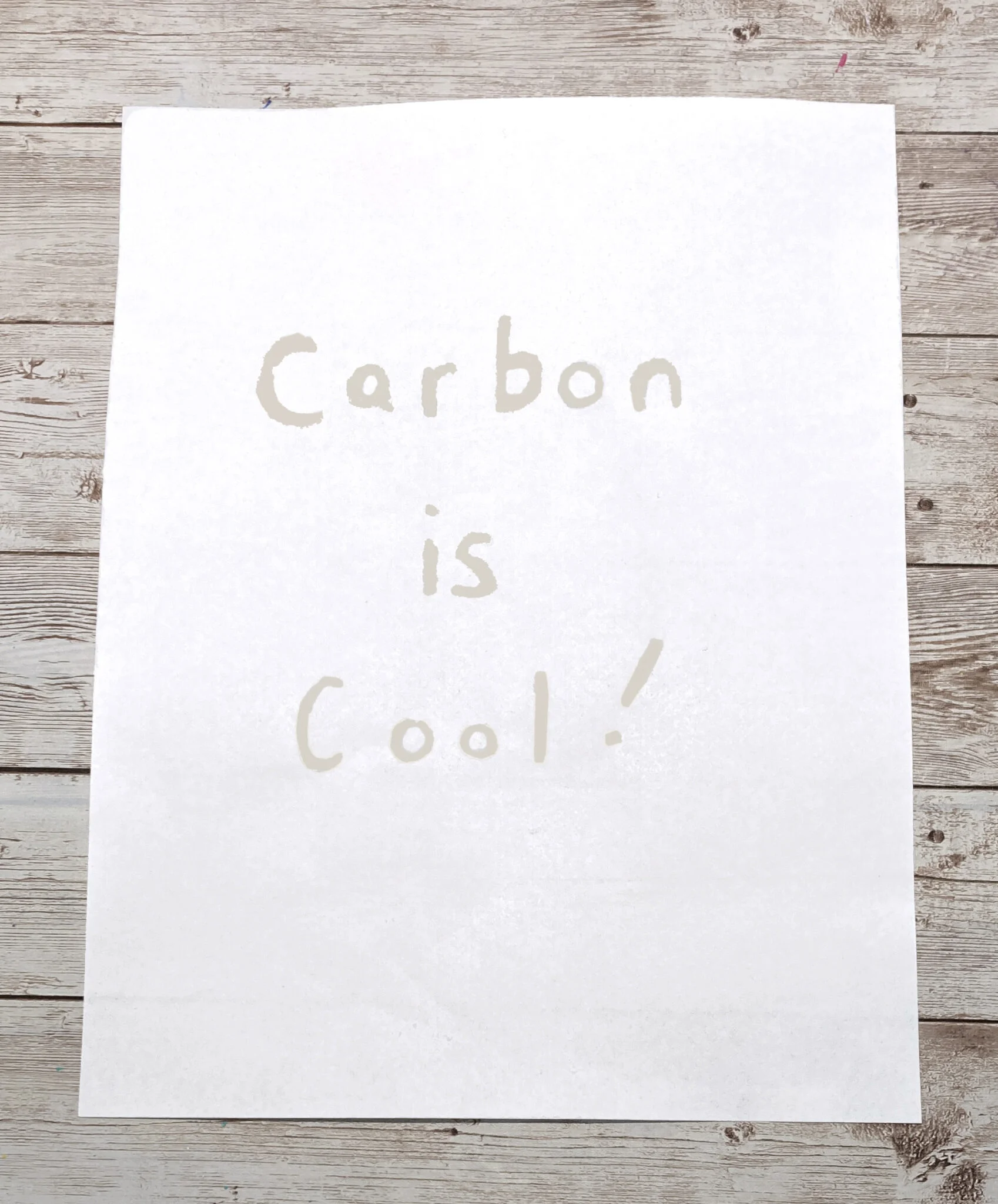
By concocting their own invisible ink, students will discover the science behind chemical reactions and learn how certain substances react to reveal hidden text when exposed to heat, light, or other catalysts.
Learn more: Invisible Ink
14. DIY Grow Box
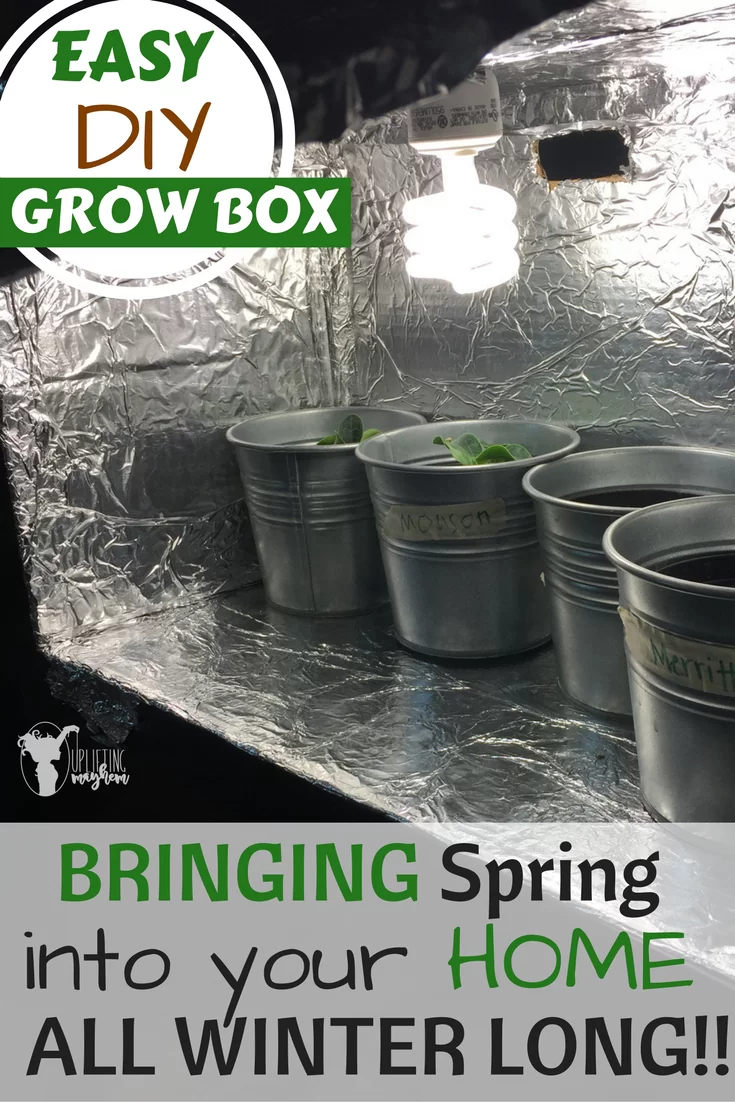
In this captivating middle school project, students will learn the wonders of plant growth and the art of nurturing a thriving garden.
By constructing their own affordable and innovative grow boxes using simple materials, they’ll have the perfect environment to observe the magical transformation from seeds to flourishing plants.
Learn more: Easy DIY Grow Box
15. Creative Ferris Wheel
By encouraging creativity and experimentation, this engaging experiment not only promises an exciting learning experience but also fosters teamwork and critical thinking
16. Alka Seltzer Rockets
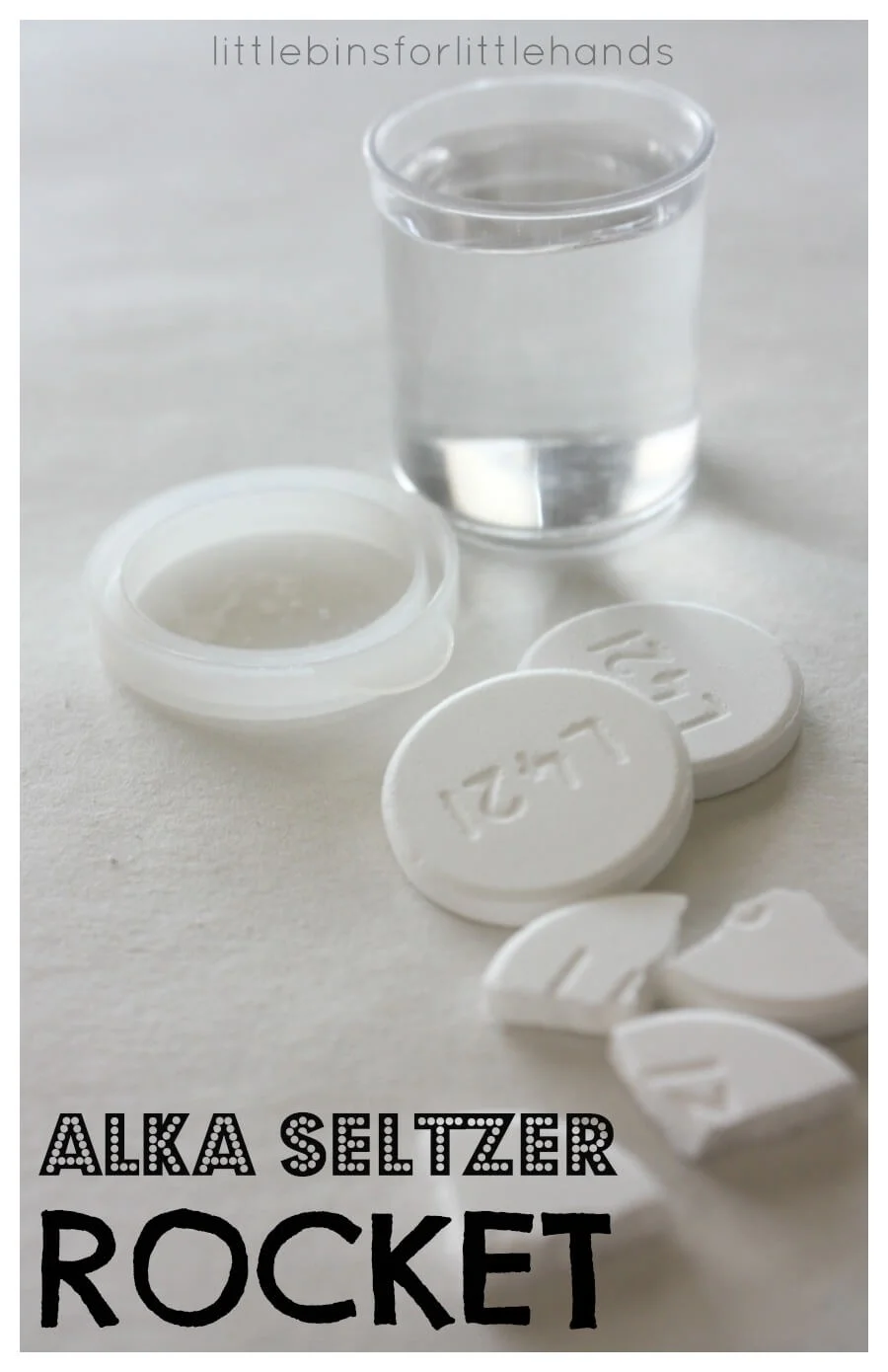
Prepare for a high-flying adventure with the Alka Seltzer Rockets science experiment! This exciting and explosive activity is a perfect choice for middle school students eager to explore the wonders of chemical reactions and rocketry.
17. Why do Apples Turn Brown?
Through hands-on exploration, middle school students will discover the role of enzymes and oxygen in this intriguing transformation.
18. Water Bending Experiment
By understanding the principles of surface tension and cohesion, you’ll be able to create mesmerizing effects, seemingly bending water with just a piece of static material.
19. Water Clock
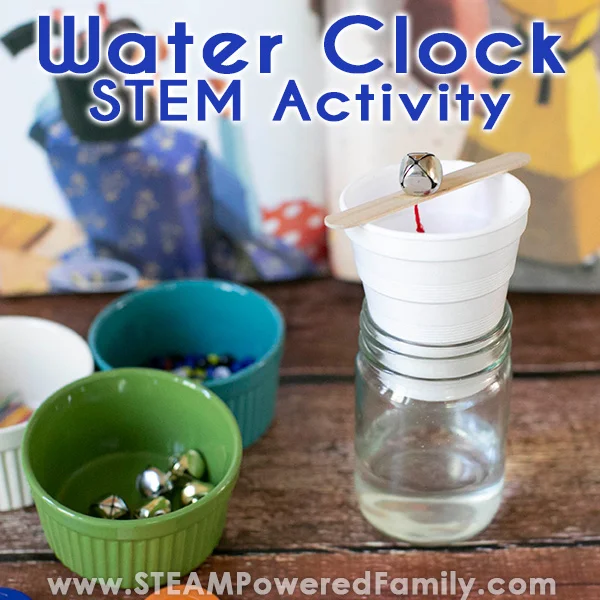
Experience the magic of timekeeping in its most ancient form with the fascinating Water Clock project! In this hands-on experiment, students will learn about history, physics, and engineering as they build their own timekeeping device using just water and a few simple materials.
Learn more: Steam Powered Family
20. Paper Ball Run Challenge
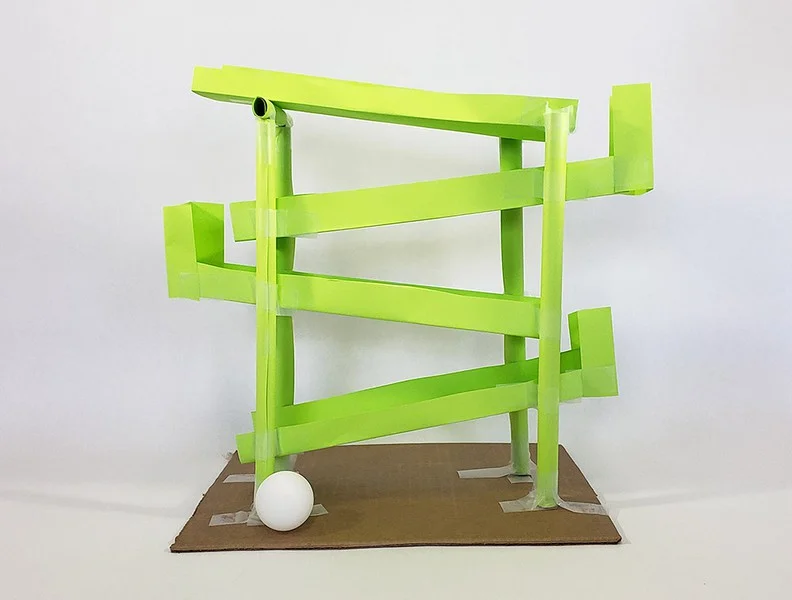
Get ready for a thrilling and creative adventure with the Paper Ball Run Challenge! In this captivating science experiment, you’ll explore the principles of motion, gravity, and engineering as you design and build your very own paper ball run.
21. Flood Barriers
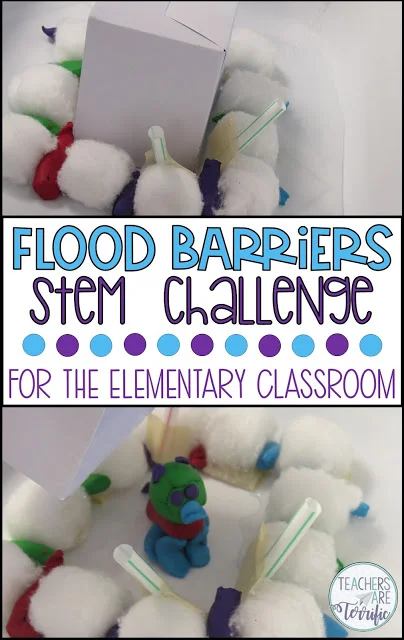
As you construct and evaluate your barriers, you’ll gain a deeper understanding of how floods occur and the importance of finding effective solutions.
Learn more: Teachers are terrific
22. Exploring the Law of Inertia Experiment Using a Fidget Spinner
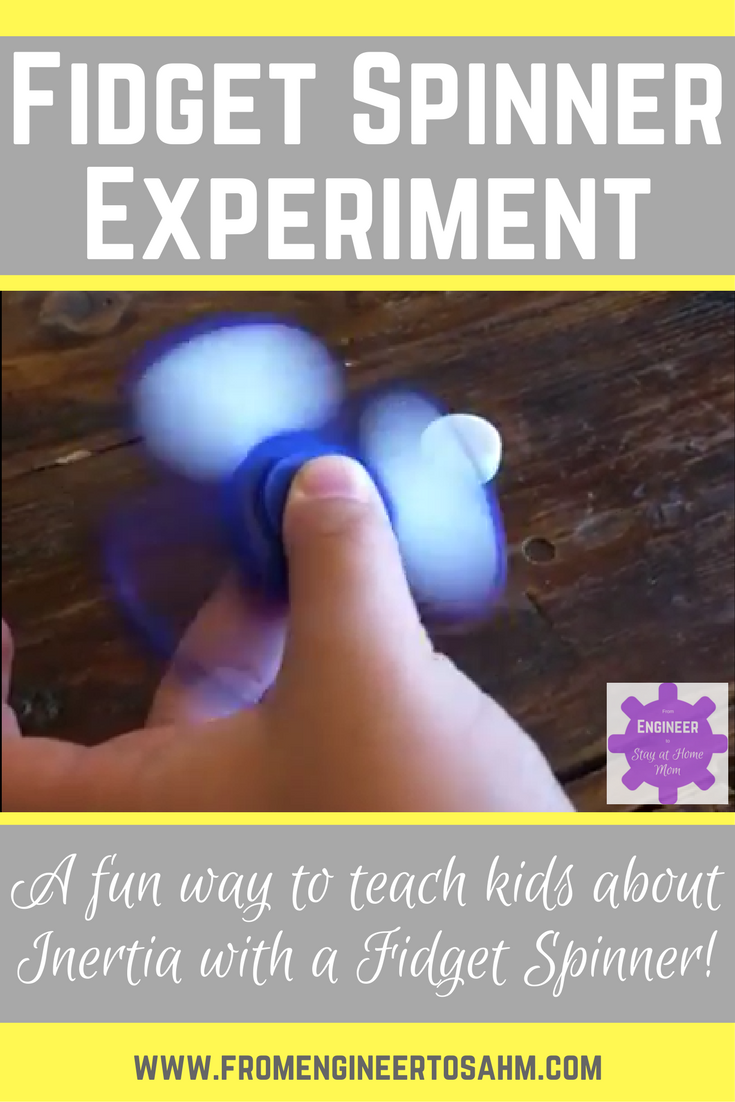
This engaging experiment will help you unravel Sir Isaac Newton’s Law of Inertia in a fun and hands-on way. By using a fidget spinner, you’ll explore how the spinning motion persists due to inertia and how different factors can influence its behavior.
23. Air Pressure Impact on Ping Pong Balls
By investigating the effects of air pressure on these lightweight spheres, you’ll uncover the secrets of flight, aerodynamics, and atmospheric pressure.
24. Rolling Uphill
In this experiment, you’ll witness the baffling phenomenon of a ball seemingly defying gravity by rolling uphill on a specially designed track.
25. Pick Up Ice with a String
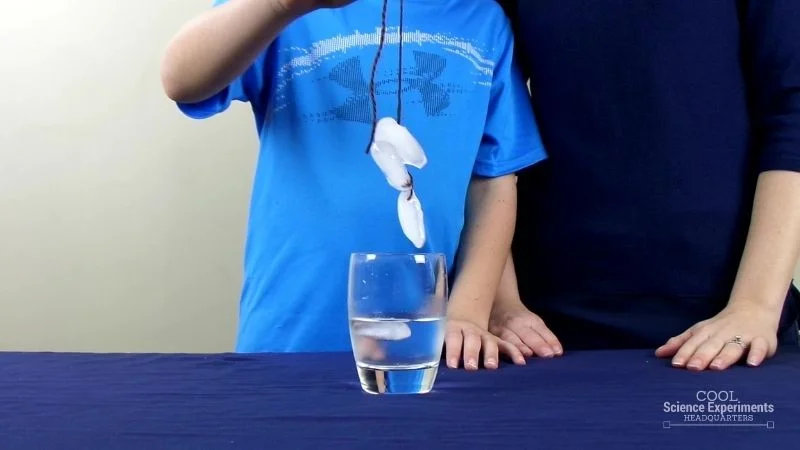
Have you ever wondered if it’s possible to lift ice using just a simple string? In this fascinating experiment, you’ll explore the principles of heat transfer and surface tension as you attempt to defy gravity and lift ice cubes with nothing but a string.
Learn more: Pick Up Ice with a String
26. Keep a Paper Towel Dry Under Water
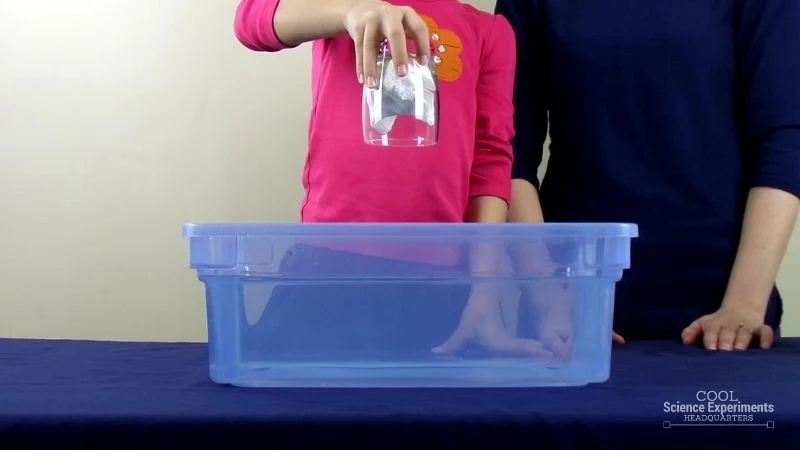
This captivating experiment will unveil the wonders of surface tension and hydrophobicity, as you attempt to create a barrier that defies the conventional wisdom of water soaking through paper.
Learn more: Keep a Paper Towel Dry Under Water
27. Upside Down Glass of Water
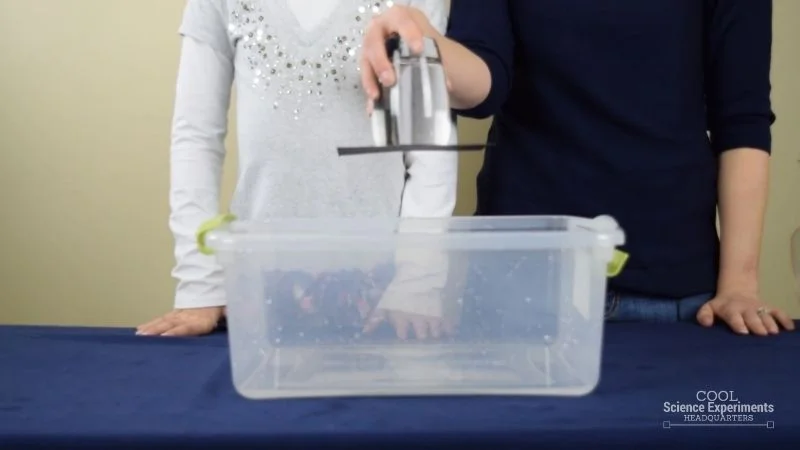
This mesmerizing experiment will unravel the fascinating concept of air pressure and its influence on liquids. As you turn a glass of water upside down and observe the water’s defiance of falling out, you’ll gain insight into the powerful role of air pressure in our everyday lives.
Learn more: Upside Down Glass of Water
28. Make a Wine Glass Sing
Have you ever wondered how to turn a simple glass of wine into a musical instrument? This captivating experiment will introduce you to the fascinating concept of acoustics and how sound waves interact with liquid-filled glasses.
29. Crush a Plastic Bottle
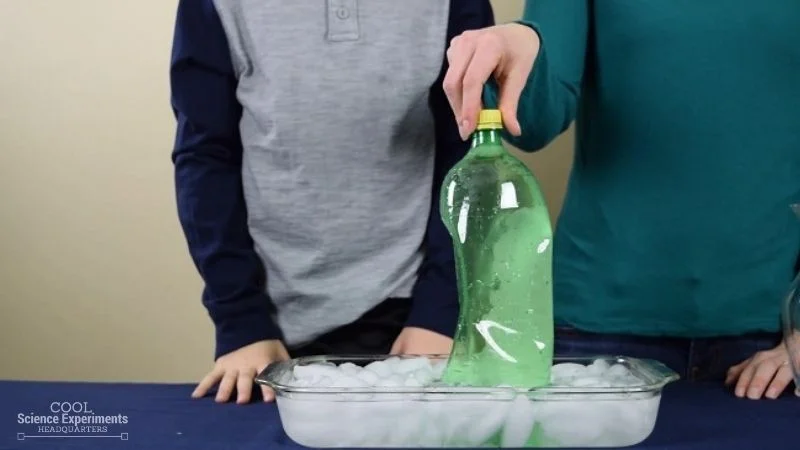
Are you curious about the forces at play when we compress a seemingly indestructible plastic bottle? This captivating experiment will unravel the science behind how pressure and air interact to create this astonishing effect.
Learn more: Crush a Plastic Bottle
30. Ruler Changes Size
Get ready to witness an optical illusion that will challenge your perception of reality. In this captivating experiment, you’ll explore the fascinating phenomenon of light refraction and how it can make objects appear different than they really are.
31. Egg in a Bottle
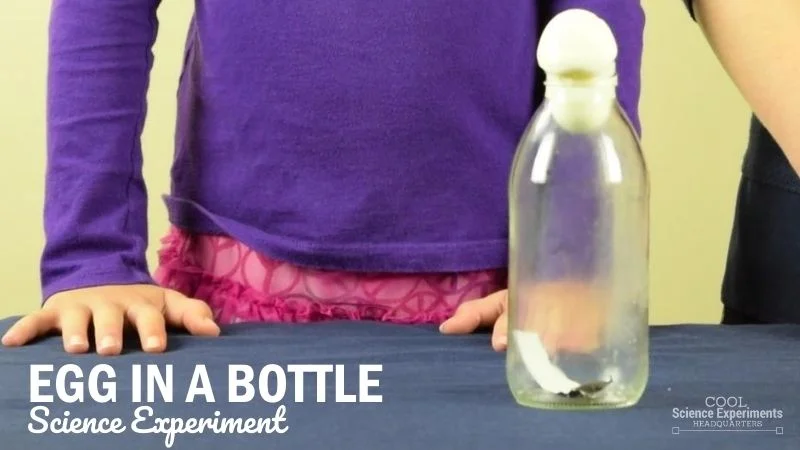
Have you ever wondered how to get an egg into a bottle without breaking it? This mesmerizing experiment will introduce you to the concept of air pressure and how it can be harnessed to achieve the impossible.
Learn more: Egg in a Bottle
32. Water Doesn’t Leak Out Science Experiment
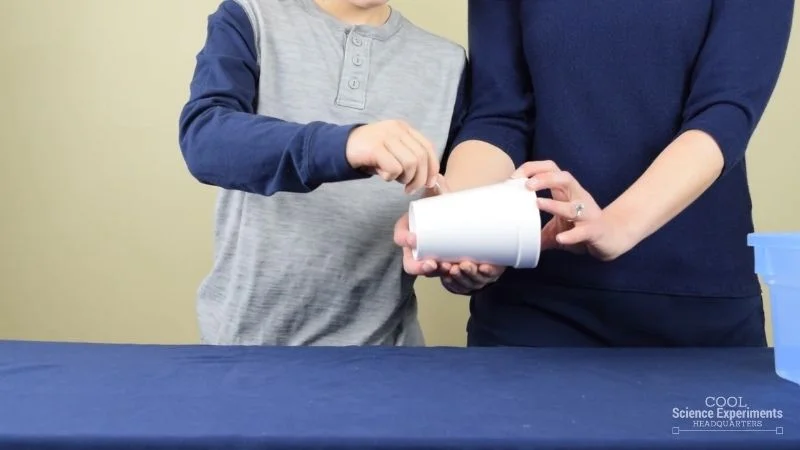
This hands-on activity not only sparks curiosity and amazement but also teaches you about the properties of gases and the laws of physics.
So, get ready to be astounded and dive into the magic of science with the “Water Doesn’t Leak Out” experiment – an entertaining and enlightening adventure that will leave you thirsting for more knowledge!
Learn more: Water Science Experiment
33. Pick Up a Ball with a Jar
This captivating experiment will introduce you to the fascinating concept of air pressure and how it can create a powerful force that defies gravity.
34. Glowing Water Science
This captivating experiment will introduce you to the fascinating properties of fluorescent materials and how they interact with light.
35. Fizzy Cloud Dough
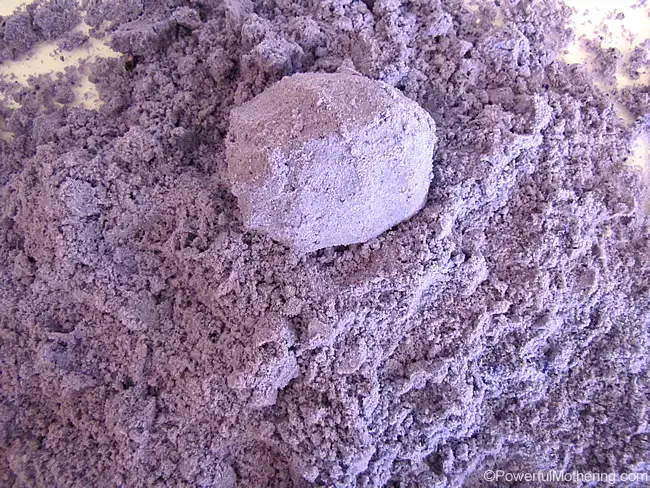
The fizzing reaction not only adds an element of excitement but also provides a great opportunity to explore the science of chemical reactions and the release of carbon dioxide.
Learn more: Fizzy Cloud Dough
36. Underwater Magic Sand
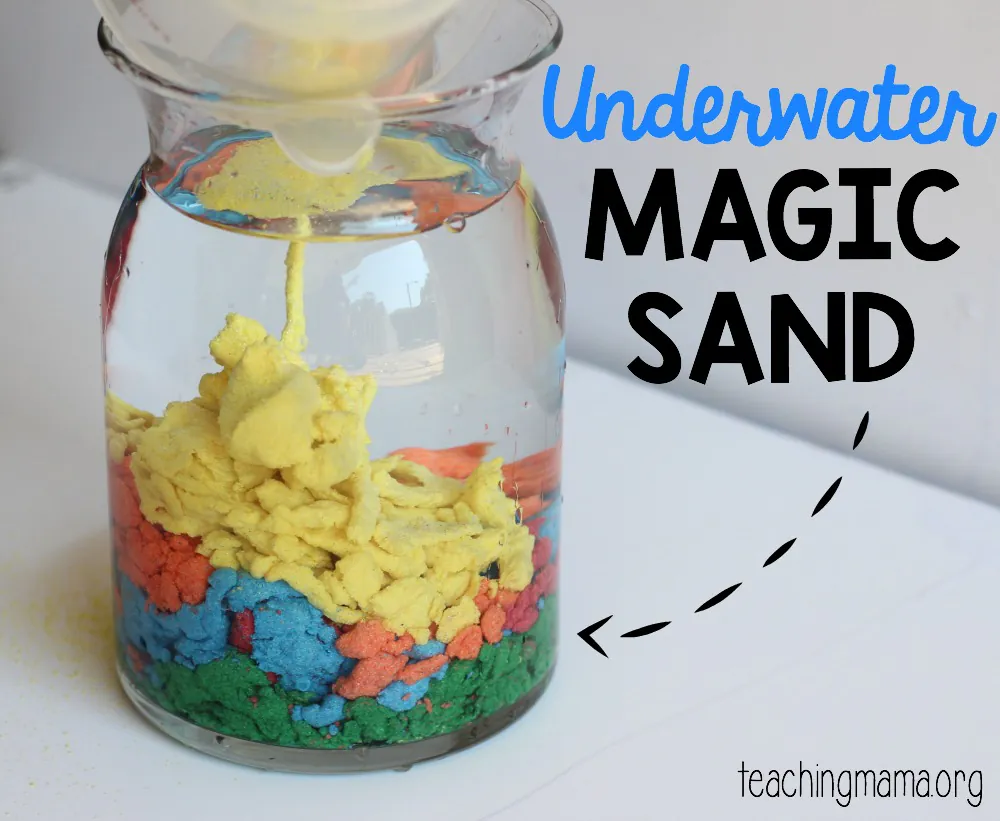
Get ready to witness the marvels of hydrophobic science and explore the secrets of this captivating underwater magic sand experiment.
Learn more: Teaching Mama Org
37. Make Bouncy Polymer Balls
This captivating experiment will take you on an exciting journey into the realm of polymers and chemical reactions.
38. Use a Crayon as a Candle

This hands-on activity not only sparks curiosity and excitement but also offers a safe and educational way to explore the science of combustion and the flammability of materials.
Learn more: Crayon Candle
39. Flame Test Colors

Not only does it spark curiosity and wonder but also deepens your understanding of the emission spectra of elements.
So, get ready to illuminate your scientific knowledge with the “Flame Test Colors” experiment – an educational and visually stunning adventure that will leave you dazzled and eager to discover more about the fascinating world of chemistry!
Learn more: Thought Co
40. Grow A Bean Plant
By planting a simple bean seed and providing it with water, sunlight, and care, you’ll witness the fascinating process of germination and watch as your bean seedling sprouts and grows.
Similar Posts:
- 68 Best Chemistry Experiments: Learn About Chemical Reactions
- 37 Water Science Experiments: Fun & Easy
- Top 50 Fun Food Science Experiments
Research Quest: Free Middle School Science Project-Based Learning
Home » Education Trends and Topics » Project Based Learning » Research Quest: Free Middle School Science Project-Based Learning
- By Vicki Davis
- September 19, 2023
- Subscribe to the 10 Minute Teacher Podcast
Are you a middle school science teacher looking to ignite your students' curiosity? Look no further than ResearchQuest, a treasure trove of free investigations that immerse students in the steps of the scientific method. From analyzing real-world artifacts to drawing their own conclusions, your students will become budding scientists. And the best part? All these resources are freely accessible from the Natural History Museum of Utah.
Research Quest sponsored this blog post. All opinions are my own.
Transform Your Classroom with Project-Based Learning and the Scientific Method
We all know that hands-on exploration is the best way to engage students in the scientific method. Whether they're examining dinosaur bones, investigating the causes behind dying tree species, or exploring predator-prey relationships, ResearchQuest offers fourteen investigations for your middle school students. They come with lesson plans, NGSS standards alignment, and real-world integration as the museum's scientists are often part of the investigation.
Easy Access to Engaging Science Projects
When you sign up for a free teacher account, you'll receive a special code that allows your students to dive into these investigations without needing their own accounts. Each project is meticulously designed to foster critical thinking and comes with a downloadable ‘research assistant' guide, assessments, and even digital options for Google Classrooms and other Learning Management Systems (LMS).
Comprehensive Instructional Guides
Each investigation is aligned with NGSS standards and comes with a detailed lesson plan, assessments, and rubrics for evaluating student critical thinking. It's a one-stop-shop for any middle school science teacher looking to incorporate the scientific method into their curriculum.
5 Ways to Integrate ResearchQuest into Your Classroom Now
1. exploring environmental stewardship through natural and synthetic materials.
Dive into the “Artifact Investigation” to explore early ceramics and their impact on both history and ecology. This cross-curricular study is an excellent way to engage students in the scientific method while discussing the importance of environmental stewardship.
Students learn about early ceramics as well as how to understand history and how it relates to science, as well.

2. Unearth the Secrets of Dinosaur Bones
The Cleveland-Lloyd Dinosaur Quarry artifacts offers a fascinating look into the world of paleontology. Students can use the scientific method to identify fossilized bones and learn about ecosystem disruptions, the fossil record, and trait-based survivability through a “Dino Lab Simulator.”

3. Delve into Forest Ecosystems
The Uinta Mountains ecosystem investigations offer a deep dive into change and stability in ecosystems. Students can build their own digital food web models and explore various phenomena affecting Lodgepole pine trees, among other things.
4. Predator and Prey Bioscience Investigations
This project-based learning activity involves game-based digital manipulatives and gathering data from museum specimens. Students will explore what physical cues predators use to make eating decisions and will have the opportunity to compare specimens from museum collections.

5. Investigating Bat Diets in Changing Ecosystems
The virtual bat dissections offer an engaging way to explore adaptability in bat diets. This investigation can spark some fantastic classroom conversations and is a great way to engage students in the scientific method.

Why Choose ResearchQuest?
ResearchQuest is more than just a set of free investigations; it's a comprehensive resource that aligns with NGSS standards and offers a wide range of project-based learning activities. It's an invaluable tool for any middle school science teacher looking to make science engaging and relatable. So why wait? Sign up today and transform your science curriculum with the power of the scientific method and project-based learning!
Disclosure of Material Connection: This is a “ sponsored blog post .” The company who sponsored it compensated me via a cash payment, gift, or something else of value to include a reference to their product. Regardless, I only recommend products or services I believe will be good for my readers and are from companies I can recommend. I am disclosing this in accordance with the Federal Trade Commission’s 16 CFR, Part 255 : “Guides Concerning the Use of Endorsements and Testimonials in Advertising.”
Never miss an episode
Get the 10-minute Teacher Show delivered to your inbox.
Thank you for subscribing to the 10 Minute Teacher! Now, check your email and confirm to get this podcast delivered to you every weekday. Check out our past episodes at www.coolcatteacher.com/podcast
There was an error submitting your subscription. Please try again.
- Tony Wagner's Redefining Rigor: Redefining our Future (If we'll only listen) October 28, 2008
- Daily Education and Technology News for Schools 11/07/2011 November 7, 2011
- 5 Ideas for Fantastic Professional Development November 26, 2017
- 5 Fast Ways to Give Positive Feedback November 2, 2019
- 5 Ideas for Friday: Ideas for Teachers In and Out of School to Try Today June 10, 2016
- Promoting Academic Discourse in the ESL Classroom May 31, 2017
Click to share this:

- Share on Tumblr

Vicki Davis
Vicki Davis is a full-time classroom teacher and IT Director in Georgia, USA. She is Mom of three, wife of one, and loves talking about the wise, transformational use of technology for teaching and doing good in the world. She hosts the 10 Minute Teacher Podcast which interviews teachers around the world about remarkable classroom practices to inspire and help teachers. Vicki focuses on what unites us -- a quest for truly remarkable life-changing teaching and learning. The goal of her work is to provide actionable, encouraging, relevant ideas for teachers that are grounded in the truth and shared with love. Vicki has been teaching since 2002 and blogging since 2005. Vicki has spoken around the world to inspire and help teachers reach their students. She is passionate about helping every child find purpose, passion, and meaning in life with a lifelong commitment to the joy and responsibility of learning. If you talk to Vicki for very long, she will encourage you to "Relate to Educate" or "innovate like a turtle" or to be "a remarkable teacher." She loves to talk to teachers who love their students and are trying to do their best. Twitter is her favorite place to share and she loves to make homemade sourdough bread and cinnamon rolls and enjoys running half marathons with her sisters. You can usually find her laughing with her students or digging into a book.
Leave a Reply Cancel reply
This site uses Akismet to reduce spam. Learn how your comment data is processed .

- Middle School Science Fair Project Ideas
Jon Feingersh Photography Inc / Getty Images
- Projects & Experiments
- Chemical Laws
- Periodic Table
- Scientific Method
- Biochemistry
- Physical Chemistry
- Medical Chemistry
- Chemistry In Everyday Life
- Famous Chemists
- Activities for Kids
- Abbreviations & Acronyms
- Weather & Climate
- Ph.D., Biomedical Sciences, University of Tennessee at Knoxville
- B.A., Physics and Mathematics, Hastings College
Coming up with an idea for a middle school science fair project can be a challenge. There is fierce competition to find the coolest idea, and you need a topic considered appropriate for your educational level:
- Elementary School Projects
- Middle School Projects
- High School Projects
- College Projects
This is your chance to shine! Middle school students can do all right with projects that describe or model phenomena, but if you can answer a question or solve a problem, you will excel. Try to propose a hypothesis and test it. Aim for a typed presentation with visual aids, such as pictures or physical examples. Choose a project you can do fairly quickly to give you time to work on the report (no longer than a month). Schools may prohibit projects using hazardous chemicals or animals, so play it safe and avoid anything that might raise red flags with your teacher.
Science Fair Projects
Here are some examples of appropriate projects:
- Can you significantly affect your household water or electric bill (water or energy usage) by making a change in your or your family's behavior? For example, you might track changes you are making, such as taking shorter showers or turning off lights and record the utility usage.
- What household waste materials might be used to filter water? Examples of materials you might try include banana peels and coffee grounds.
- What materials glow under black light ? Can you use the UV light to find invisible, possibly smelly, stains in your carpet or elsewhere in your house?
- Will chilling an onion before cutting it keep you from crying ?
- Does catnip repel cockroaches better than DEET?
- What ratio of vinegar to baking soda produces the best chemical volcano eruption?
- What type of plastic wrap best prevents evaporation?
- What plastic wrap best prevents oxidation?
- What percentage of an orange is water?
- Are night insects attracted to lamps because of heat or light?
- Can you make Jell-O using fresh pineapples instead of canned pineapples?
- Do white candles burn at a different rate from colored candles?
- Does the presence of detergent in water affect plant growth?
- Can a saturated solution of sodium chloride dissolve Epsom salts?
- Does magnetism affect the growth of plants?
- How does the shape of an ice cube affect how quickly it melts?
- Do different brands of popcorn leave different amounts of unpopped kernels?
- How accurately do egg producers measure eggs?
- How do differences in surfaces affect the adhesion of tape?
- If you shake up different kinds or brands of soft drinks (e.g., carbonated), will they all spew the same amount?
- Are all potato chips equally greasy?
- Do the same types of mold grow on all types of bread?
- Does light affect the rate at which foods spoil?
- Can you use a household water filter to remove flavor or color from liquids?
- Does the power of a microwave affect how well it makes popcorn?
- Do all brands of diapers absorb the same amount of liquid? Does it matter what the liquid is (water as opposed to juice or... um.. urine)?
- Do all dishwashing detergents produce the same amount of bubbles? Clean the same number of dishes?
- Is the nutritional content of different brands of a vegetable (e.g., canned peas) the same?
- How permanent are permanent markers? What solvents (e.g., water, alcohol, vinegar, detergent solution) will remove the ink? Do different brands/types of markers produce the same results?
- Is laundry detergent as effective if you use less than the recommended amount? More?
- Do all hairsprays hold equally well? Equally long? Does the type of hair affect the results?
- What effect do additives have on crystals? You could add food coloring, flavorings, or other "impurities."
- What steps can you take to maximize crystal size? You can affect vibration, humidity, temperature, the rate of evaporation, purity of your growth medium, and time allowed for crystal growth.
- How do different factors affect seed germination? Factors that you could test include the intensity, duration, or type of light, the temperature, the amount of water, the presence/absence of certain chemicals, or the presence/absence of soil. You can look at the percentage of seeds that germinate or the rate at which seeds germinate.
- Is a seed affected by its size? Do seeds of different sizes have different germination rates or percentages? Does seed size affect the growth rate or final size of a plant?
- How does cold storage affect the germination of seeds? Factors you can control include the type of seeds, the length of storage, the temperature of storage, and other variables , such as light and humidity.
- What conditions affect the ripening of fruit? Look at ethylene, enclosing a fruit in a sealed bag, temperature, light, or nearness to other pieces of fruit.
- How are different soils affected by erosion? You can make your own wind or water and evaluate the effects on soil. If you have access to a very cold freezer, you can look at the effects of freeze-and-thaw cycles.
- How does the pH of soil relate to the pH of the water around the soil? You can make your own pH paper , test the pH of the soil, add water, then test the pH of the water. Are the two values the same? If not, is there a relationship between them?
- How close does a plant have to be to a pesticide for it to work? What factors influence the effectiveness of a pesticide (Rain? Light? Wind?)? How much can you dilute a pesticide while retaining its effectiveness? How effective are natural pest deterrents?
- Elementary School Science Fair Projects
- High School Science Fair Projects
- 8th Grade Science Fair Project Ideas
- Plant and Soil Chemistry Science Projects
- Chemistry Science Fair Project Ideas
- Household Product Testing Science Fair Projects
- Acid & Base Science Fair Project Ideas
- 6th Grade Science Fair Projects
- Grade School Science Fair Project Ideas
- Science Fair Project Ideas
- 4th Grade Science Fair Projects
- Second Grade Science Fair Projects
- Crystal Science Fair Projects
- Magnetism Science Fair Projects
- 3rd Grade Science Fair Projects

Breaking News

Crafting The Future: An Inside Look at Marshalls High School in Los Angeles

Inclusive Relationship Meaning: Understanding the Concept

How to Get Out of School Excuses

Best Homeschool Curriculum for Autism: A Comprehensive Guide for Parents and Educators

Exciting Research Topics for Middle Schoolers to Fuel Curiosity

Working on the phonological skills by teaching phonemic awareness to the advanced level

What is the goal when de escalating crisis behavior at school ?

Middle school is a time of burgeoning curiosity and the perfect opportunity for students to engage in research that not only educates them academically but also cultivates skills for the future. By encouraging young learners to explore topics they are passionate about, educators and parents play a pivotal role in their intellectual development and the growth of their intrinsic motivation. This blog post outlines a diverse range of research topics suited to the inquiring minds of middle school students, giving them the freedom to deepen their understanding of various subjects while honing critical thinking and independent study skills.
Uncovering the Mysteries of History
Middle schoolers often find history fascinating, particularly when learning about the past from distinct perspectives. Here are some intriguing historical research topics to consider:
- The Unsung Heroes of the Civil Rights Movement: Apart from the well-known leaders, students can explore the contributions of lesser-known figures who played a significant role in the struggle for equality.
- The Impact of Ancient Civilizations on Modern Society: Researching the ways in which the Greeks, Romans, Egyptians, or other ancient societies have influenced contemporary culture, politics, and technology offers a broad canvas for exploration.
- Everyday Life in Different Historical Periods: Focusing on the routines, customs, and technologies that shaped people’s daily lives in times gone by can provide valuable insights into societal norms and individual experiences.
Science and the Natural World
The sciences are a playground of wonder, with an infinity of topics waiting to be explored. Here are some research ideas that can nurture a love for discovery and experimentation:
- Climate Change: Effects and Solutions: Investigating the causes and potential solutions to this global challenge can make students aware of their role in protecting the planet.
- The Wonders of the Solar System: Encouraging a study of the planets, their moons, and the vast expanse of space they inhabit can ignite dreams of interstellar exploration.
- Biodiversity and Ecosystem Conservation: Researching the variety of life on Earth and strategies to protect and sustain ecosystems can foster a sense of environmental stewardship.
Literature, Language, and Creative Expression
Language and literature are potent forms of human expression, allowing students to explore complex ideas and emotions. Here are some topics that bridge the gap between art and academia:
- Interpreting Classic Literature for Modern Relevance: Encouraging the study of timeless works can lead to discussions on their contemporary significance and the evolution of societal values.
- The Structure and Evolution of Language: Investigating the origins and changes in language over time can be a rich area of study, especially when paired with the examination of cultural shifts.
- The Intersection of Art and Literature: Exploring how visual arts and writing intersect to convey messages and emotions can be a fertile ground for interdisciplinary research.
Mathematics and Logic Puzzles
The precision and patterns found in mathematics can be both satisfying and thought-provoking. Middle school students often enjoy the thrill of solving problems and unraveling puzzles. Here are some mathematical research topics that can engage students’ analytical minds:
- Famous Mathematical Conjectures: Researching unsolved problems, such as the Goldbach conjecture or the Riemann hypothesis, can introduce students to the excitement of open questions in mathematics.
- The Application of Math in Various Industries: Investigating how mathematical principles underpin fields like music, art, sports, and technology can illuminate the subject’s real-world utility.
- The History of Mathematical Discoveries: Tracing the lineage of mathematical concepts through different cultures and periods can showcase the universality and timelessness of mathematics.
Social Sciences and Human Interaction
Studying human behavior and society can help students develop empathy and a deeper understanding of the world around them. Here are some social science research ideas to explore:
- The Impact of Social Media on Friendships and Relationships: Research could focus on positive and negative effects, trends, and the future of social interaction.
- Cultural Traditions and Their Meanings: Investigating the origins and contemporary significance of customs from various cultures can foster respect for diversity and a global perspective.
- The Psychology of Decision Making: Exploring the factors that influence human choices, from cognitive biases to social pressures, can provide insights into individual and collective behavior.
Technology and Innovation

Middle schoolers are often tech-savvy and interested in the latest gadgets and advancements. Here are some technology and innovation research topics to tap into that curiosity:
- The Impact of Gaming on Society: Research could examine how video games influence education, social issues, or even career choices.
- Emerging Technologies and Their Ethical Implications: Encouraging students to study technologies like artificial intelligence, gene editing, or wearable tech can lead to discussions on the ethical considerations of their use and development.
- Inventions That Changed the World: Chronicling the history and influence of significant inventions, from the wheel to the internet, can provide a lens through which to view human progress.
By providing middle schoolers with the opportunity to conduct meaningful research in a topic of their choosing, we not only deepen their education but also equip them with the skills and passion for a lifetime of learning. This list is just the beginning; the key is to foster curiosity and guide young minds toward engaging, challenging, and diverse research experiences. Through such explorations, we empower the next generation to think critically, communicate effectively, and, most importantly, to nurture their innate curiosity about the world.
Implementing Research Projects in the Classroom
Encouraging middle school students to undertake research projects requires a strategic approach to ensure sustained interest and meaningful outcomes. Here are some methods educators can employ:
- Mentorship and Support: Pairing students with teacher mentors who can guide them through the research process, provide feedback, and encourage critical thinking is essential for a fruitful research experience.
- Cross-Curricular Integration: Linking research topics to content from different subjects helps students appreciate the interconnectedness of knowledge and develop versatile learning skills.
- Use of Technology and Media: Incorporating digital tools for research, presentation, and collaboration can enhance engagement and teach essential 21st-century skills.
- Presentation and Reflection: Allocating time for students to present their findings nurtures communication skills and confidence, while self-reflection activities help them internalize their learning journey.
These strategies can create a robust framework within which students can pursue their curiosities, leading to a more personalized and impactful educational experience.
What is a good topic to research for middle school?
A good topic for middle school research could delve into the Role of Robotics in the Future of Society . Students can explore how robotics may transform jobs, healthcare, and everyday life. They can examine the balance between automation and human work, predict how robots could augment human abilities, and discuss the ethical dimensions of a robotic future. This inquiry not only captivates the imagination but also encourages critical thinking about technology’s impact on tomorrow’s world.
What are the 10 research titles examples?
- The Evolution of Renewable Energy and Its Future Prospects
- Investigating the Effects of Microplastics on Marine Ecosystems
- The Influence of Ancient Civilizations on Modern Democracy
- Understanding Black Holes: Unveiling the Mysteries of the Cosmos
- The Impact of Augmented Reality on Education and Training
- Climate Change and Its Consequences on Coastal Cities
- The Psychological Effects of Social Media on Teenagers
- Genetic Engineering: The Possibilities and Pitfalls
- Smart Cities: How Technology is Shaping Urban Living
- The Role of Nanotechnology in Medicine: Current Applications and Future Potential
Fascinating Facts About Middle School Research Topics
- Interdisciplinary Impact : Research projects in middle school often blend subjects, such as the integration of art and mathematics when exploring patterns and symmetry, which helps students discover the interconnectivity of different fields of knowledge.
- Skill Building : Engaging in research equips middle schoolers with advanced skills in critical thinking, problem-solving, and time management, which are beneficial across their academic journey and beyond.
- Diversity in Content : Middle school research topics are notably diverse, ranging from examining the role of robotics in society to exploring the psychological effects of social media, catering to a wide array of student interests and strengths.
- Tech Savvy Learning : Technology-based research topics, such as the influence of smart cities or the impact of augmented reality in education, are deeply relevant to tech-savvy middle school students, making learning more engaging and relatable.
- Cultural Relevance : Researching topics like cultural traditions and their meanings encourages middle schoolers to develop a global perspective and fosters a deeper understanding and appreciation for the diversity within their own school community and the world at large.
You May Also Like

More From Author

+ There are no comments
Cancel reply.
Save my name, email, and website in this browser for the next time I comment.

You May Also Like:


7 Reasons You Should Use STEM Research Projects in Your Middle School Classroom
- February 26, 2023
- Computer Science , Engineering , Robotics , Science , STEM
- Career Exploration , Engaging Lessons , Interdisciplinary , Real World Connections
Incorporating STEM research projects into the middle school classroom can open up a world of opportunities for students to explore their creative sides and learn practical skills. Learn more about how these projects can benefit your students and discover some ideas here.
Short on time? Grab a ready-to-go STEM research project !

1. Explore student-generated questions and topics of interest in STEM
One of the challenges and exciting parts of being a STEM teacher is not always having all the answers. My students often ask me questions about STEM topics that I am not an expert on. Rather than avoiding the questions or leaving it at “I don’t know,” let’s encourage our students to research the answers! R esearch project s that center around a student’s own interests increase engagement and curiosity. Giving them control of their own learning helps make the process meaningful for them, encourages active participation, and helps develop the habits of a life-long learner.
2. Introduce real-world STEM careers
A great way to use STEM research projects in middle school classrooms is to connect them with real-world career paths. For example, when students research the safety of autonomous cars , they will also be learning about mechanical engineers, computer scientists, and robotics engineers. In doing so, students make meaningful connections to the STEM career paths available after high school. Through these projects, students become familiar with roles within particular industries which could lead them to consider these careers for their future.
3. Build background knowledge with STEM research projects
STEM research projects enable middle schoolers to learn more about important topics in science, technology, engineering, and mathematics. Through their research explorations, students gain valuable knowledge about a particular topic that you can then continue to build on throughout your STEM course. Using your students’ research to supplement future lessons and class discussions supports a deeper understanding of the concepts that students are learning. For example, at the beginning of my computer science course, my students research why K-12 students are being taught to code . Then we connect back to their discoveries about the applications of computer science and the importance of learning to code throughout the course.
4. Develop 21st century STEM skills
Critical thinking and communication are two important 21st-century skills taught in STEM class . Research projects can play a significant role in developing these abilities. Through the research process, students are practicing scientific reading and writing. Designing research projects with Interesting prompts, engaging text, annotation guides, and graphic organizers support students with critical thinking, reading, and writing.
5. Teach about emerging technologies and their applications
STEM fields are constantly evolving as new discoveries are made and new inventions are created. This makes STEM an inherently interesting and engaging field. Our middle school students want to know about the newest technology and how to use it. Research projects give them a chance to explore these interests and make connections between what they are learning in the classroom and the real world.
6. Assign a cross-curricular ELA and STEM research project
Cross-curricular STEM and ELA research projects can be an effective way for students to integrate their skills and concepts. These projects can involve students in conducting research on a STEM topic and then writing about their findings in an essay. By combining science and ELA, students can develop their skills in critical thinking, reading, and writing. For example, students could research the impacts of robots on our society and then write an essay about whether robots will have a positive or negative impact on our future. This type of project not only promotes a deeper understanding of science and language concepts but also allows students to apply their knowledge in a real-world context.
7. Use STEM research projects for low-prep sub plans
Another great benefit to STEM research projects is their low-prep nature. If a teacher ever needs an emergency sub plan, instructions for a research project can be stored easily and pulled out when the need arises. Students can work independently or in small groups on projects that challenge them to think critically, apply knowledge and use critical thinking skills – all hands-off for the teacher!
Looking for a ready-to-go STEM research project?

For all the reasons listed above, I include STEM research projects in all of my semester and year-long STEM courses. My students love getting the opportunity to explore their interests, learn about new technologies, and engage in debate surrounding real-world topics. You can grab one of these low-prep, teacher-tested, and middle schooler-approved projects today!
Each project includes:
- Detailed teacher notes for easy facilitation
- Student assignment pages with video guides, annotation keys, and graphic organizers
- Printable PDF, Google, and Easel versions of the student assignemnt
- Embedded links to high-quality background research video clips and articles
- Easy-to-use grading rubrics and answer keys
- Suggestions for differentiation
Grab a STEM research project now to get back your nights and weekends while knowing your students will be developing their research and writing skills and learning about important topics in STEM!
Leave a Reply Cancel reply
Your email address will not be published. Required fields are marked *
More Blog Posts
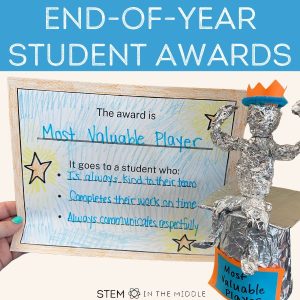
Creative and Unique End-of-Year Student Awards for Middle School
By Trilby Hillenbrand The weather’s getting warmer, and everyone’s counting down the days until summer! End-of-year awards are a great
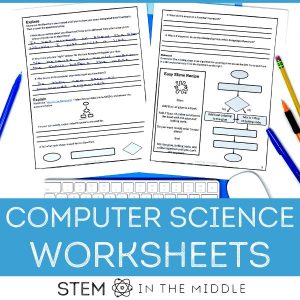
Create Coding Wizards with Our Middle School Computer Science Worksheets
By Trilby Hillenbrand Hello, Middle School STEM Teachers! Unlock the world of computer programming for your students with our computer
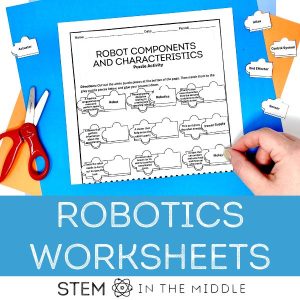
Robotics Worksheets for Middle School Students
By Trilby Hillenbrand Hey, STEM Teachers! Ready to elevate your middle school STEM class with robotics but could use some

Hi, I'm Trilby!
I help middle school educators like you facilitate high quality STEM lessons that engage and challenge students while saving time and energy.
Grab your free STEM lesson!
Shop the store.

Copyright 2024 | STEM in the Middle, LLC. | All Rights Reserved

Science By Sinai
Middle School Science Tips, Ideas, and Resources
50 Fun End of Year Science Activities for Middle School
Are you looking for meaningful, end of year science activities for your middle school students?

Karen Sinai
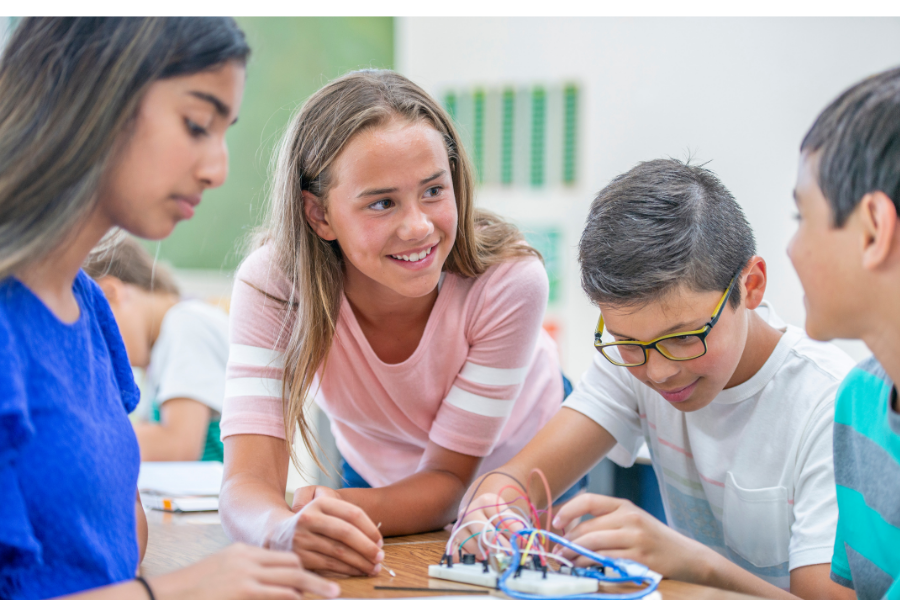
Updated May 18, 2022
I put together 50 end of year science activities such as STEM, critical thinking CER, worthwhile research activities, environmental exploration, crafty ideas and just messy fun projects! I have done the research for you so most ideas have links to get you started!
Exciting STEM Activities to Finish Off the Year
1) Rube Goldberg machines Who doesn’t love these? Grab a ton of recycled materials, some glue and tape and let the students be extremely creative! Read my blog post called How to Create an Exciting but Structured Rube Goldberg Machines Unit about how to keep everything organized and structured to keep your sanity!
2) Design and Create Solar Ovens with Pizza Boxes – Break out the marshmallows and chocolate and use the sun to create yummy treats.
3) Paper airplane contest – When I did this last year I was shocked at how many students have never made paper airplanes! 4) STEM Design and Build Magnet Mazes Students love to create themes such as amusement parks, farms, zoos, Disney World, etc. as they make obstacles for the magnets throughout the maze. Keep the project structured and organized so that the students stay on task. How to Create STEM Magnet Mazes.
5) Paper Roller Coaster – This requires minimum materials and lots of critical thinking.
6) STEM Design a Seed Dispersal Method – Making organic flowers and seeds out of recyclables really has the kids thinking.
7) Design and Build a Water Filter – Make the dirtiest water you can for the students to “clean”.
8) Foam Insulation Roller Coaster – Cut foam pipe insulation in half and twist it all over your walls for a super fun marble roller coaster.
9) STEM Design and Build Craft Stick Bridges – Have students first research bridge designs and then try to create the strongest one on their own.
10) Design an Aluminum Foil Boat to hold pennies. -Give students a certain amount of aluminum foil and have them design boats to hold weight.
11) STEM Mutualism Symbiosis Structured Project -Review relationships between animals and have students design two animals that have a symbiotic relationship.
12) Design an Egg Drop (with international rules) -An old favorite and this site has the basic rules.
13) Balloon Cars – Tons of fun racing these cars.
14) STEM Design and Build Electrical Circuit Games -Students design games using their knowledge of basic electrical circuits. We love to invite younger students in to play the games! This blog post describes how we do it. How to Create STEM Electrical Circuit Games.
15) Paper Ball Run Challenge – Great, inexpensive activity.
16) Spoon and Popsicle Stick Catapults – We all love flinging things!
Entire STEM Based Units
17) Steven Spangler This website has tons of ideas for all types of labs.
18) Science Buddies -Great site for STEM ideas.
19) Science Spot – Survivor Science – An entire unit, based on the TV Show, that could take a week to cover.
20) Science Spot- Junk Box Wars. A well organized unit using cheap materials.
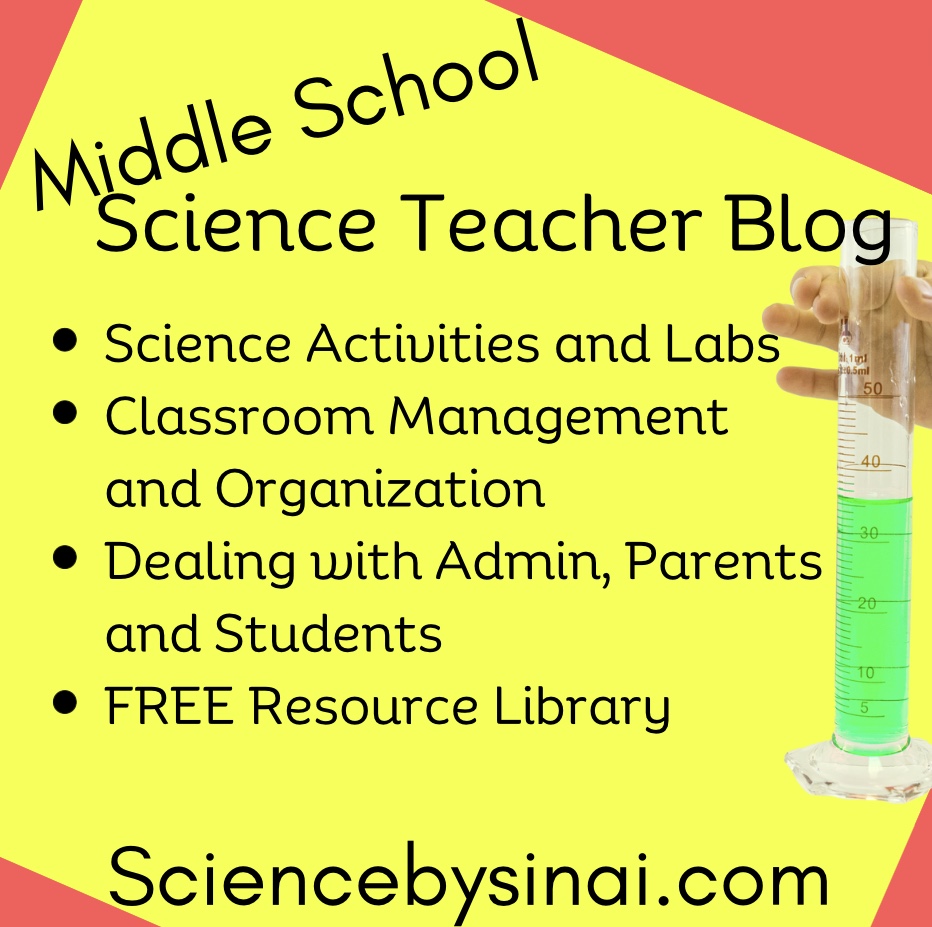
Messy But Lots of Science Going On
21) Bake bread with different ratios of ingredients for the students to taste test. Use any bread recipe and change out ingredients and/or proportions. Cooking chemistry is probably something most students never thought about.
22) Dissect hearts or a brain. Preserved materials are good but one year I had a butcher come in with some fresh organs, which was amazing!
23) Play With Dry Ice Day – Dry ice is super fun as long as proper supervision is in place.
24) Make Oobleck -Whether each student makes their own or you make a giant batch, cornstarch and water makes a super fun goo to play with for hours.
25) Launch Alka-Seltzer Rockets – You will have to order old film canisters for these but they are worth it.
26) Make Ice Cream in a Ziploc Bag _ Such a great hot day activity with a lot of science to discuss.
27) Make Slime! – Instant crowd pleaser!
28) Make Puffy Slime using Shaving Cream – Not as stretchy but a fun, great smelling alternative to regular slime.
29) Make bubble experiments -Everyone loves bubbles! Have the students experiment with different wand shapes, bubbles inside of bubbles, or different proportions for the soap solution.
30) Density experiments -There are lots and lots of density experiments that you can come up with such as guessing if something will float in water or not, building density towers, oil and water experiments, etc.
Environmental Exploration Projects
31) Food Web Dice Roll Game For Events Causing Changes in Populations and Biodiversity -Students draw out a food web from a specific biome, connecting the plants and the animals of their food chains. They then roll a pair of dice that determines either a man-made or natural event that affects different aspects of that food web. If a specific plant or animal is affected by that event, then the lines are erased on their food web. Since this is a game of chance, not all of the students will come out with the same results at the end which leads to great discussions!
32) Abiotic/Biotic Schoolyard Ecosystem Scavenger Hunt. -I do this activity at least three times during the school year. I take the kids outside and we walk around with the scavenger hunt guide, on their iPads, and observe the changing seasons. My blog post called Go Outdoors on an Exciting Schoolyard Ecosystem Scavenger Hunt! explains the components of the hunt.
33) Design an animal from two animals- This is a fun and interesting project where students take two unrelated animals and combine them into one. They need to determine it’s needs and habitat as well. The students love either drawing their new creatures or using a Photoshop app to combine two images.
34) Watch the Lorax Movie -I have never once had a class that wasn’t quiet and mesmerized watching this movie. Such great discussions can happen afterwards! I have seen extensions to this with students making the Truffle trees out of various materials. I also like to have the students write what would happen next if the movie continued.
35) Explore Pond Microorganisms as Bioindicators of Water Pollution .-If you have a pond nearby, or are you were able to collect pond water yourself, students love looking under the microscopes at the unbelievably diverse creatures! It’s very helpful to have reference images to know what they are finding. I also put together references as to which creatures are more or less tolerant of pollutants. My blog post called Identifying Pond Water Microorganisms as Bioindicators explains how I use them.
36) Build a Zoo -I know a lot of teachers do a variation of this project and it really is great. Students need to come up with the abiotic and biotic features for their specific animal and then design an enclosure with all of the needs met. The individual enclosures can then be put together into a giant map of the classroom zoo.
Critical and Creative Thinking Activities
37) CSI -This is just one of many websites describing how you can do a very fun CSI unit with lots of inexpensive and fun activities such as fingerprinting, mystery powders, acid and base testing, etc.
38) Genetic Project – This is one of my all-time favorites and it has become a favorite of my students as well! Students design a male and female alien that is especially adapted to a planet that they invent. They come up with the traits and then use Punnett squares to create the babies. I made this well structured which makes it easier. If time permits, we also love to make the aliens into three-dimensional creatures along with designing a planet surface.
39) Pringles Potato Chip Circle Challenge -If you haven’t seen this all over social media, the idea is that you stack the potato chips in a standing ring without using any glue or adhesive. It’s hard but it’s very satisfying when it works!
40) CER Image Prompts for Critical Thinking -I like to start and finish my year with a review of the basics of CER methods. The students like using the image prompts from either life, physical or earth science to figure out the scientific question asked.
41) Pretests for next year- This can be a good opportunity to see what the students know about your units for next year. This is particularly helpful if you teach multi levels of science in middle school.
Worthwhile and Interesting Research Activities
42) Research an Invasive Species -Many of our “local” animals and plants are actually invasive species. Students choose from a list of many different plants and animals and research the areas that are being invaded and how it occurred.
43) Research A Storm – Many kids are very interested in the big storms such as tornadoes, hurricanes and supercell thunderstorms. This is a very structured layout, with research prompts, and the kids can then present to the class.
44) Research a Scientist-I had a teacher friend who had the students research a scientist and then present to the class dressed up as that scientist may have dressed. The kids loved it and it was very interesting.
45) Research an Element-there are actually many different types of activities online for students to choose. I have seen making an advertisement for that element, a history of that element, a superhero made from the element, etc.
Crafty Science Projects
46) Make Shrinky Dinks -You will need access to an oven to do this project but the students really love it!
47) Paint T-shirts or lab coats-If the students have old shirts, or you have a budget for inexpensive lab coats, this can be a lot of fun with fabric paint.
48) Make Kites -You may be surprised how many kids have never flown a kite!
49) Build a Cardboard Mechanical Hand -This takes patience and time but, in the end, students understand the complexity of the human hand.
50) Design Growth Mindset posters for next year- have the students come up with their own mindset statements and make posters to hang around your classroom.
Ending the year with creativity and active, hands-on learning, is a great way to pull everything together. This is particularly important if the students have just sat through state testing and have very little mind space left for a deep unit. I am always pleasantly surprised at how engaged and enthusiastic they are with the end of the year science activities!

Similar Posts
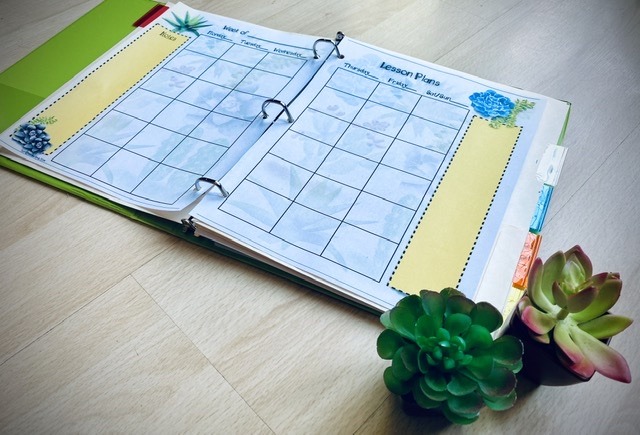
Are You Looking For a Super Organized Lesson Planner Just For Science Teachers?
Are You Looking For a Super Organized Lesson Planner Just For Science Teachers? My science teacher planner keeps your classroom organized and makes keeping inventory so much easier. It will also make lesson planning and pacing faster! Would you like to be a more organized science teacher? Have you been looking for a science teacher…
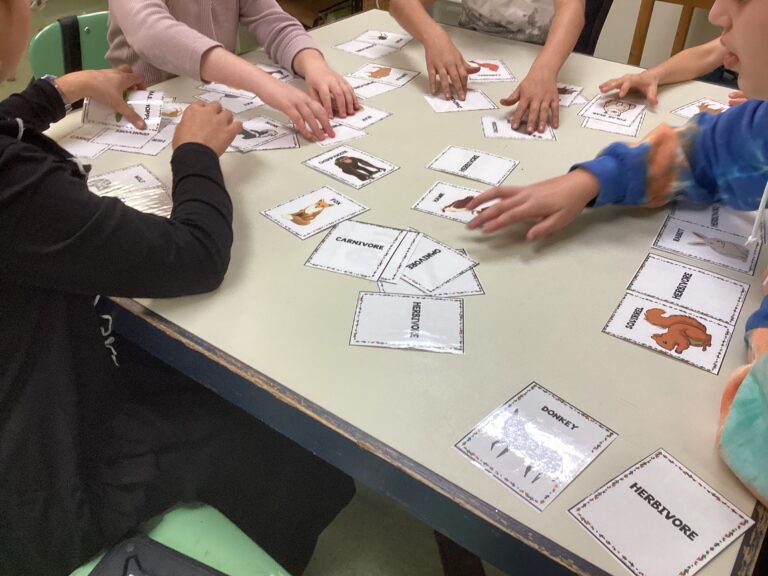
12 Ways to Use Sort Cards in the Science Classroom
12 Ways to Use Sort Cards in the Science Classroom Do you need some ways to use sort cards in the science room to get the students engaged while learning concepts? I used to believe that matching sort game cards were for the younger classes. Once I started using them with my middle school students,…
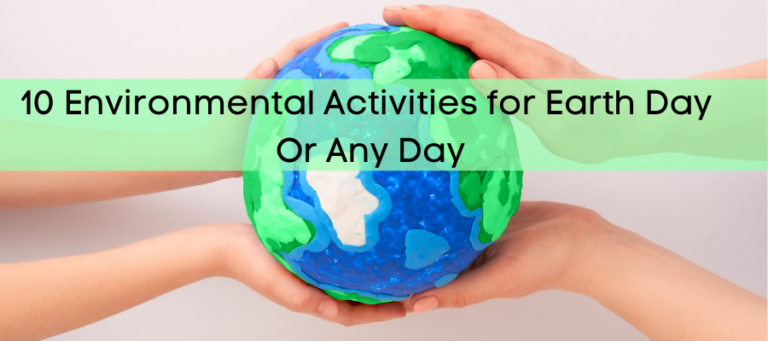
10 Environmental Activities for Earth Day or Every Day
10 Environmental Activities for Earth Day or Every Day What are you doing for Earth Day? Are you looking for activities to help the students bring environmental conservation into their own lives? Every day should be Earth Day, but these ten activities will start great discussions as students celebrate environmental awareness. 1. Create a Giant…

10 Tips for Good Time Management in the Science Classroom
10 Tips for Good Time Management in the Science Classroom Are you determined to do hands-on activities in your middle school science room, but are afraid of how much time management it involves? What if you set everything up and the lab takes too long? Are you afraid that the students won’t finish in time…
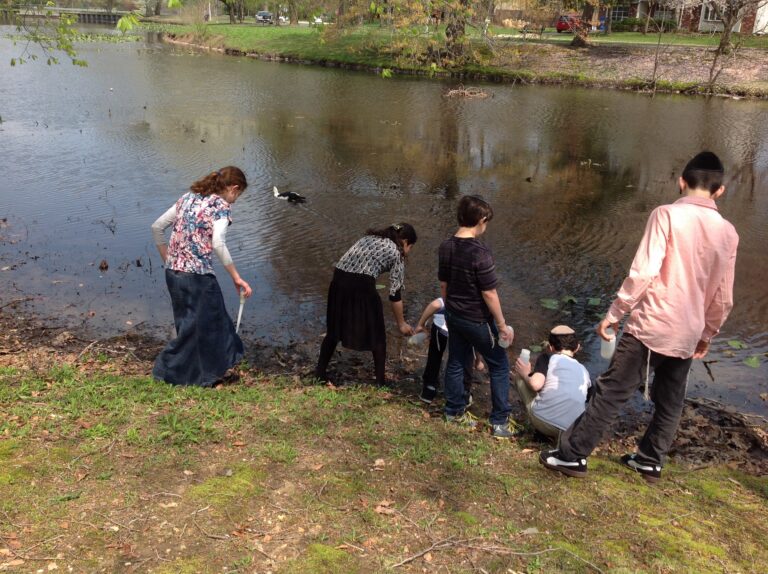
Identifying Pond Water Microorganisms as Bioindicators
Identifying Pond Water Microorganisms as Bioindicators Have you been wanting to look at pond water with your students, but you struggle with identifying microorganisms? Do you need to know which creatures are tolerant to pollution, and which aren’t, but don’t have time to research? I have drawn 46 common macro and microorganisms that you are…
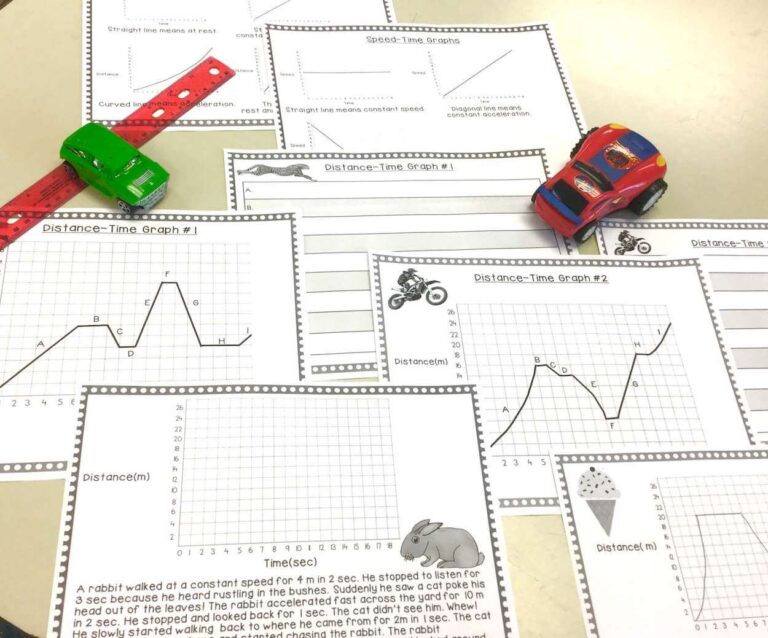
How to Interpret Distance-Time and Speed-Time Graphs
How to Interpret Distance-Time and Speed-Time Graphs Do your students need practice interpreting distance-time graphs and speed-time graphs as part of your motion and forces unit? By the time your students finish this activity called Interpreting Distance-Time Graphs and Speed-Time Graphs Unit, they will have a good understanding how to read the slope on a…
Get Your ALL ACCESS Shop Pass here →

Science Experiments For Middle Schoolers
Middle schoolers love science! These hands-on middle school science experiments can be completed in the classroom or at home, whether you’re exploring viscosity, density, liquids, solids, and so much more. Below you’ll find a great list of middle school science activities and experiments, including 7th grader science fair project ideas to get you started.
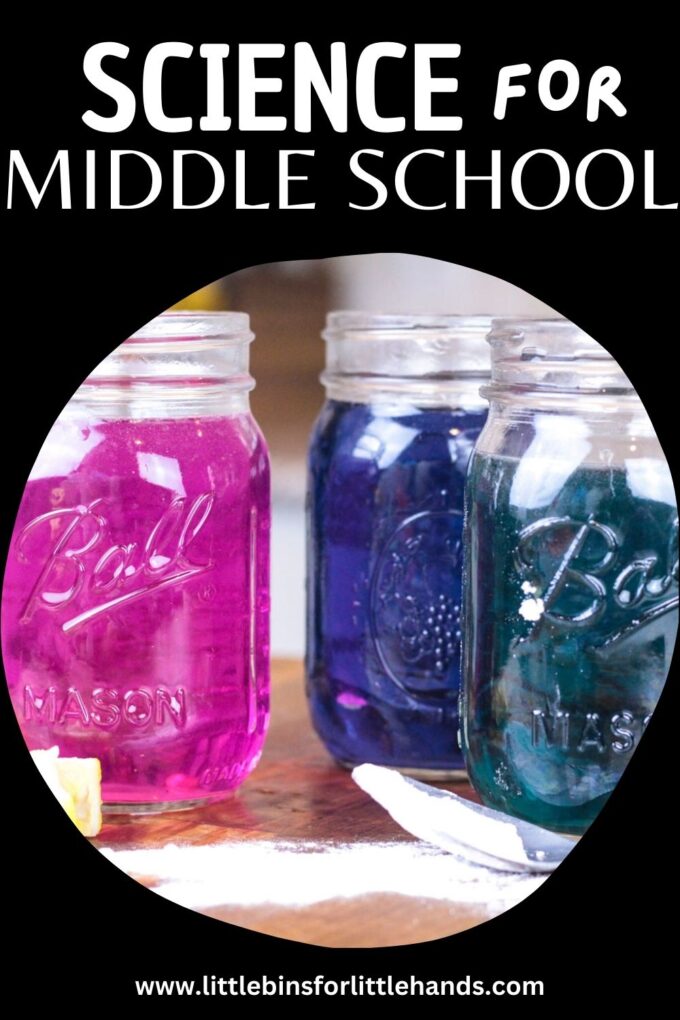
What is Middle School Science?
Are you looking for cool science experiments for kids that also offers a valuable opportunity to learn basic chemistry, physics, and earth science concepts? With simple ingredients and basic materials, your middle school students will have a blast with these easy science experiments.
You’ll find that just about every science experiment on the list below uses supplies you can easily find around the house or classroom or are quick and easy to pick up at the supermarket.
Mason jars, empty plastic bottles, baking soda, salt, vinegar, zip-top bags, rubber bands, glue, hydrogen peroxide, food coloring (always fun but optional), and various other common ingredients make science accessible to everyone!
Explore chemical reactions to simple machines, surface tension, gravity, buoyancy, and more with various science experiments, demonstrations, and activities.
Printable Science and STEM Packs
For a comprehensive guide to all of our science and STEM projects , make sure to look at these guides to get started today.
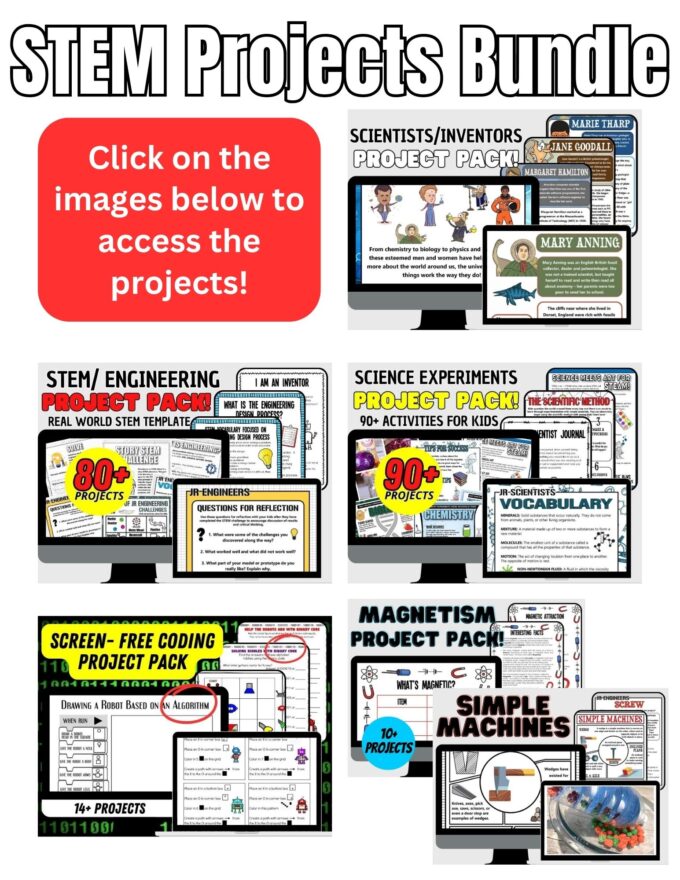
Free Science Challenge Calendar Guide
Also, download our free printable 12 Days of Science Challenge to get started!
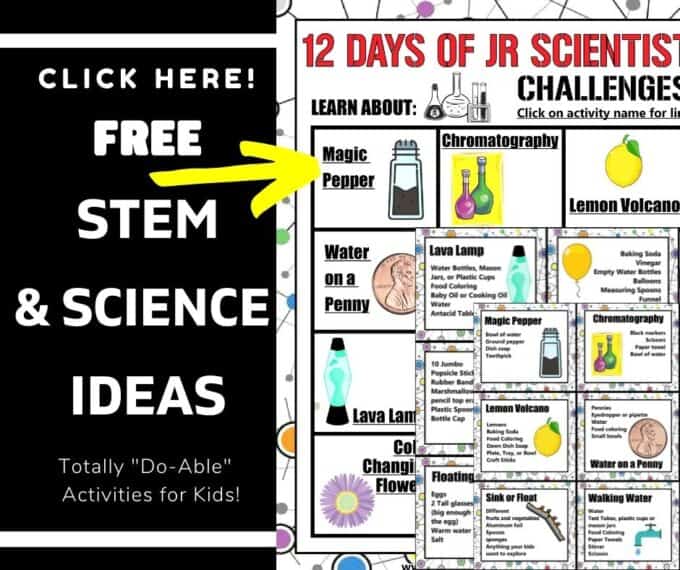
Try These Science Experiments for Middle Schoolers
Grab a pen and make a list! Everything you need for educational and fun science is right here.
At the end of this huge list, you’ll find more science resource guides such as vocabulary words , book choices , and information on the science process !
Make simple airfoils and explore air resistance.

ALKA-SELTZER EXPERIMENT
What happens when you drop alka seltzer tablets into oil and water? This type of experiment explores both physics and chemistry. You can even look at the emulsification concept while at it.
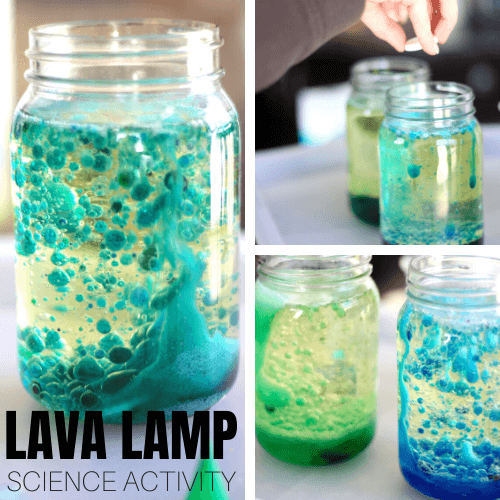
ALKA SELTZER ROCKET
Get ready for some fun with this Alka Seltzer Rocket. Easy to set up and simple to do, it is chemistry in action!
APPLE BROWNING EXPERIMENT
How do you keep apples from turning brown? Do all apples turn brown at the same rate? Answer these burning apple science questions with an apple oxidation experiment.
ARCHIMEDES SCREW
Archimedes’ screw, is one of the earliest machines used for moving water from a lower area to a higher area. Make an Archimedes screw that uses cardboard and a water bottle to create a machine to move cereal!
Atoms are tiny but very important building blocks of everything in our world. What are the parts of an atom?
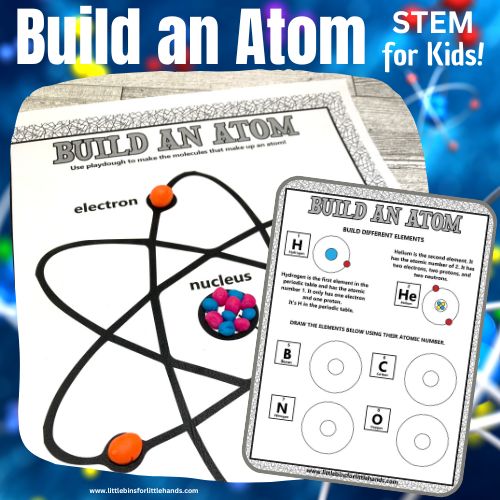
BALLOON EXPERIMENT
Also try our soda balloon experiment .
BLUBBER EXPERIMENT
How do whales stay warm in very cold water? Test out how blubber works as an insulator with this fun science experiment.
BOTTLE ROCKET
There’s nothing better than a baking soda and vinegar reaction when it comes to science experiments, and it is great for a variety of ages including middle schoolers. While a bit messy, it’s a fantastic opportunity to explore mixtures, states of matter, and basic chemistry.

CABBAGE PH INDICATOR
Explore how re cabbage can be used to test liquids of varying acid levels. Depending on the pH of the liquid, the cabbage turns various shades of pink, purple, or green! It’s incredibly cool to watch, and kids love it!
CELLS (Animals and Plants)
Learn about the unique structures that make up plant and animal cells with these two free, hands-on STEAM projects.
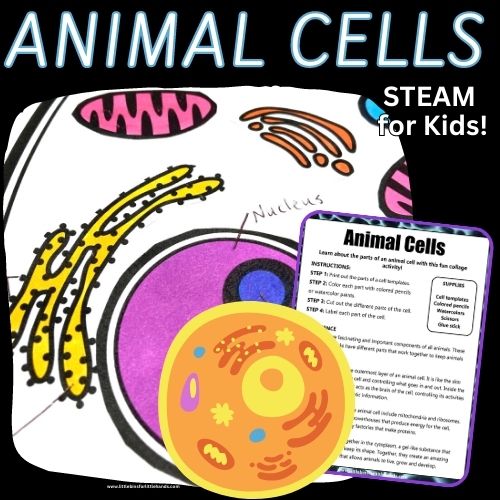
CANDY EXPERIMENTS
Take a sweet treat and apply science to it. There are a variety of ways you can experiment and explore candy for physics fun!
CRUSHED CAN EXPERIMENT
Love exploding experiments? YES!! Well here’s another one the kids are sure to love except this one is an imploding or collapsing experiment! Learn about atmospheric pressure with this incredible can crusher experiment.
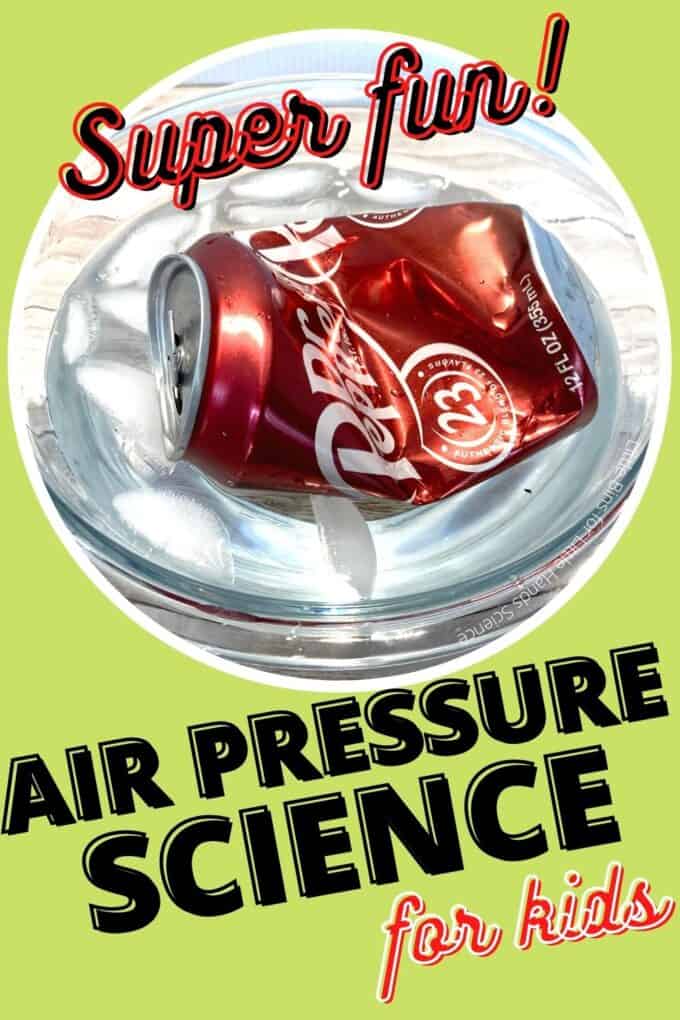
DANCING CORN
Can you make corn dance? Explore a simple chemical reaction, with the addition of corn kernels. Also try it with raisins or cranberries !
DANCING SPRINKLES
Turn on your favorite tunes and make colorful sprinkles dance! Explore sound and vibrations when you try this fun dancing sprinkles experiment.
DIY COMPASS
Learn what a compass is and how a compass works, as you make your own homemade compass. All you need are a few simple materials to get started.
DNA EXTRACTION
Usually, you can’t see DNA except with a high-powered microscope. But with this strawberry DNA extraction experiment, you can get the DNA strands to release from their cells and bind together into a format that’s visible with the naked eye.
YOU MAY ALSO LIKE: Build a Candy DNA Model
EGG DROP EXPERIMENT
Take the egg drop challenge as you investigate what makes for the best shock absorber for dropping an egg without it breaking on impact.
EGG IN VINEGAR EXPERIMENT
Can you make an egg bounce? Find out with this chemical reaction, of an egg in vinegar.
ELEPHANT TOOTHPASTE
Explore an exothermic chemical reaction with hydrogen peroxide and yeast.

DRY-ERASE MARKER EXPERIMENT
Create a dry-erase drawing and watch it float in water.
FLOATING RICE
Grab some rice and a bottle, and let’s find out what happens when you put a pencil in the mix! Do you think you can lift a bottle of rice with a pencil? Try this fun friction experiment and find out.
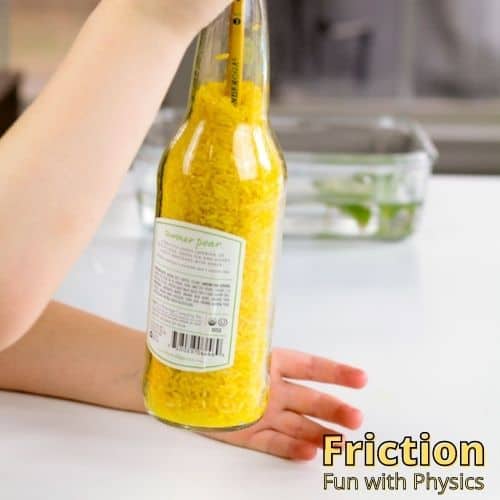
Green Pennies Experiment
Why is the Statue of Liberty green? It’s a beautiful patina, but how does it happen? Explore the science in your own kitchen or classroom by making green pennies.
Growing Crystals
There are several ways to explore super saturated solutions and grow crystals. Featured below is the traditional growing borax crystals science experiment . However, you can also grow edible sugar crystals or check out how to grow salt crystals . All three chemistry experiments are cool for kids!
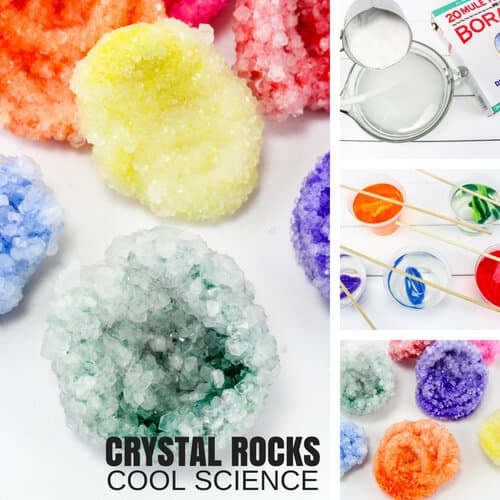
Heart Model
Use this heart model project for a hands-on approach to anatomy. You only need a few simple supplies and very little prep to make this fun heart pump model.
Invisible Ink
Write a message that no one else can see until the ink is revealed with your own invisible ink! Cool chemistry that’s perfect to do at home or in the classroom. Compare it with a different type of invisible ink with cranberry secret messages .
Liquid Density Experiment
This fun liquid density experiment explores how some liquids are heavier or denser than others.
Lemon Battery
What can you power with a lemon battery ? Grab some lemons and a few other supplies, and find out how you can make lemons into lemon electricity!

Learn how our amazing lungs work, and even a bit of physics with this easy balloon lung model.
The chemical reaction in this magic milk experiment is fun to watch and makes for great hands-on learning.
Melting Ice Experiment
What makes ice melt faster? Investigate with a fun ice melting experiment that kids are sure to enjoy. Plus, try an icy STEM challenge.
Mentos and Coke
Here’s another fizzing experiment kids are sure to love! All you need are Mentos and Coke. It’s not a chemical reaction taking place like you might think.
Milk and Vinegar
Transform a couple of common kitchen ingredients into a moldable, durable piece of a plastic-like substance. Make plastic milk with a chemical reaction.
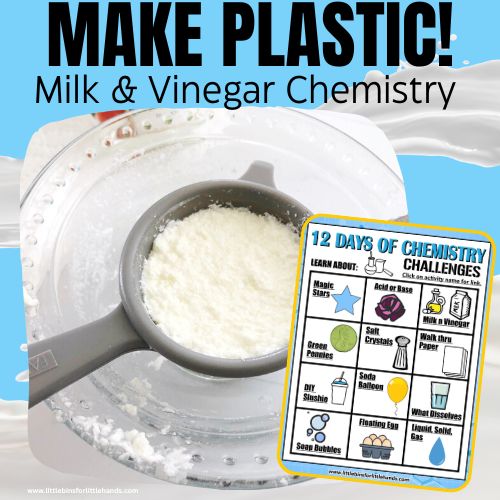
Oil Spill Experiment
Apply science to the care and protection of the environment with this oil spill demonstration. Learn about an oil spill and investigate the best ways to clean it up.
Penny Boat Challenge and Buoyancy
Design a simple tin foil boat, and see how many pennies it can hold before it sinks. How many pennies will it take to make your boat sink? Learn about simple physics while you test out your engineering skills.
Pepper and Soap Experiment
Sprinkle some pepper in water and make it dance across the surface. Explore surface tension of water when you try this pepper and soap experiment.
Pop Rocks and Soda
Pop rocks is a fun candy to eat, and now you can turn it into an easy Pop Rocks science experiment.
Potato Osmosis Lab
Explore what happens to potatoes when you put them in concentration salt water and then pure water.
Rising Water Experiment
Place a burning candle in water and watch what happens to the water. Explore the science of burning candles when you try this fun candle experiment.
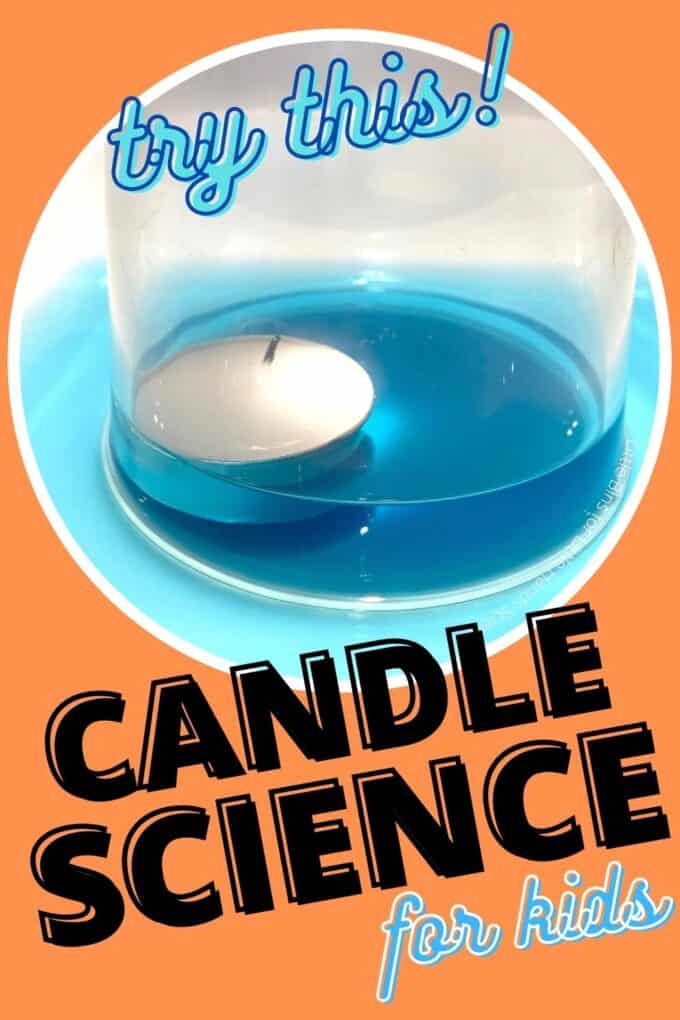
Salad Dressing- Emulsification
You can mix oil and vinegar for the perfect salad dressing! It’s called emulsification. Simple science you can set up with ingredients found in your kitchen cupboards.
Saltwater Density Experiment
Investigate whether an egg will sink or float in salt water.
Skittles Experiment
Explore what happens to skittles candy in water and why the colors don’t mix.
Screaming Balloon
This screaming balloon experiment is an awesome physics activity! Explore centripetal force or how objects travel a circular path with a few simple supplies.

Grab the glue and make a classic chemistry demonstration. Slime is all about science and a must try at least one. If you want a 2 for1, our magnetic slime is just about the coolest thing you’ll ever play with… it’s alive (well, not really)!
Stormwater Runoff
What happens to rain or melting snow when it can’t go into the ground? Set up an easy stormwater runoff model with your kids to explore what happens.
Surface Tension Experiments
Learn what the surface tension of water is and check out these cool surface tension experiments to try at home or in the classroom.
Walking Water
Watch the water travel as it makes a rainbow of color! How does it do that?
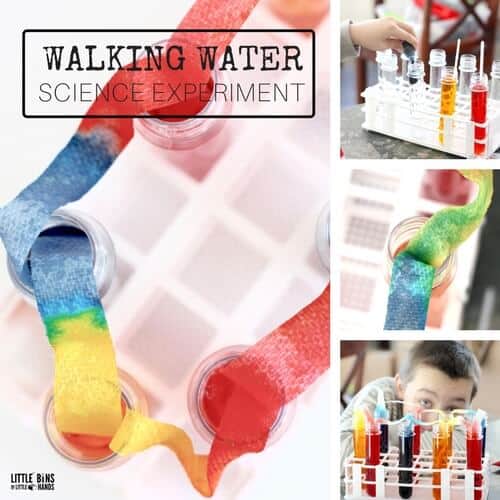
More Helpful Science Resources
Science vocabulary.
It is never too early to introduce some fantastic science words to kids. Get them started with a printable science vocabulary word list . You’re going to want to incorporate these science terms into your next science lesson!
WHAT IS A SCIENTIST
Think like a scientist! Act like a scientist! Scientists, like you and me, are also curious about the world around them. Learn about the different types of scientists and what they do to increase their understanding of their specific area of interest. Read What Is A Scientist
SCIENCE PRACTICES
A new approach to teaching science is called the Best Science Practices. These eight science and engineering practices are less structured and allow for a more free – flowing approach to problem-solving and finding answers to questions. These skills are critical to developing future engineers, inventors, and scientists!
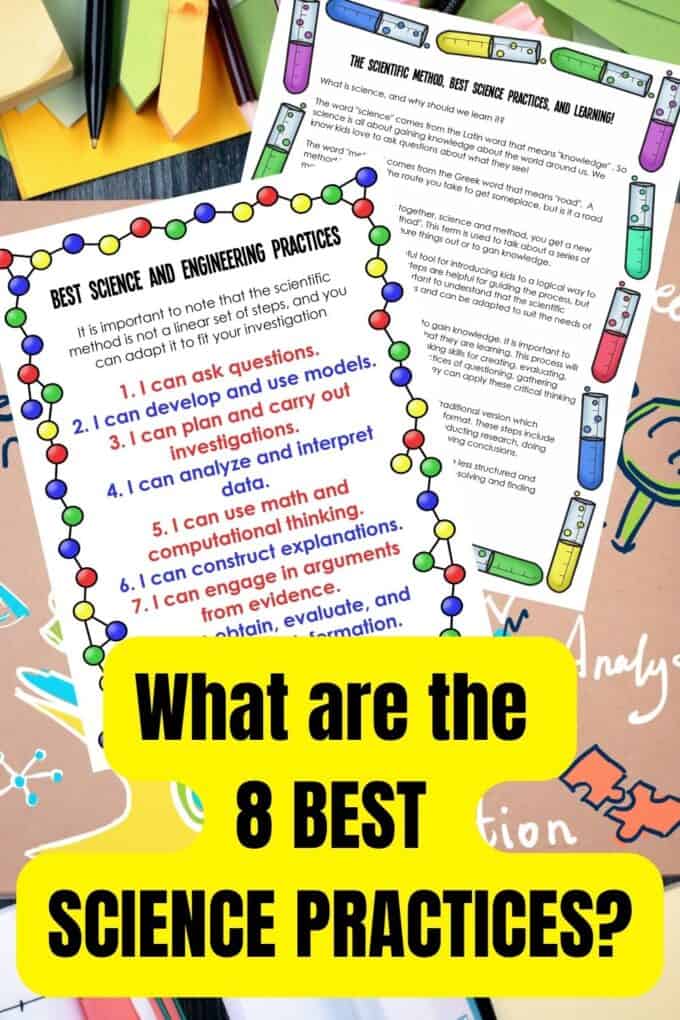
Bonus STEM Projects for Kids
STEM activities include science, technology, engineering, and mathematics. As well as our kid’s science experiments, we have lots of fun STEM activities for you to try. Check out these STEM ideas below…
- Building Activities
- Engineering Projects For Kids
- What Is Engineering For Kids?
- Coding Activities For Kids
- STEM Worksheets
- Top 10 STEM Challenges For Kids

Middle School Science Fair Project Pack
Looking to plan a science fair project, make a science fair board or want an easy guide to set up your own science experiments?
Go ahead and grab this free printable science fair project pack to get started!
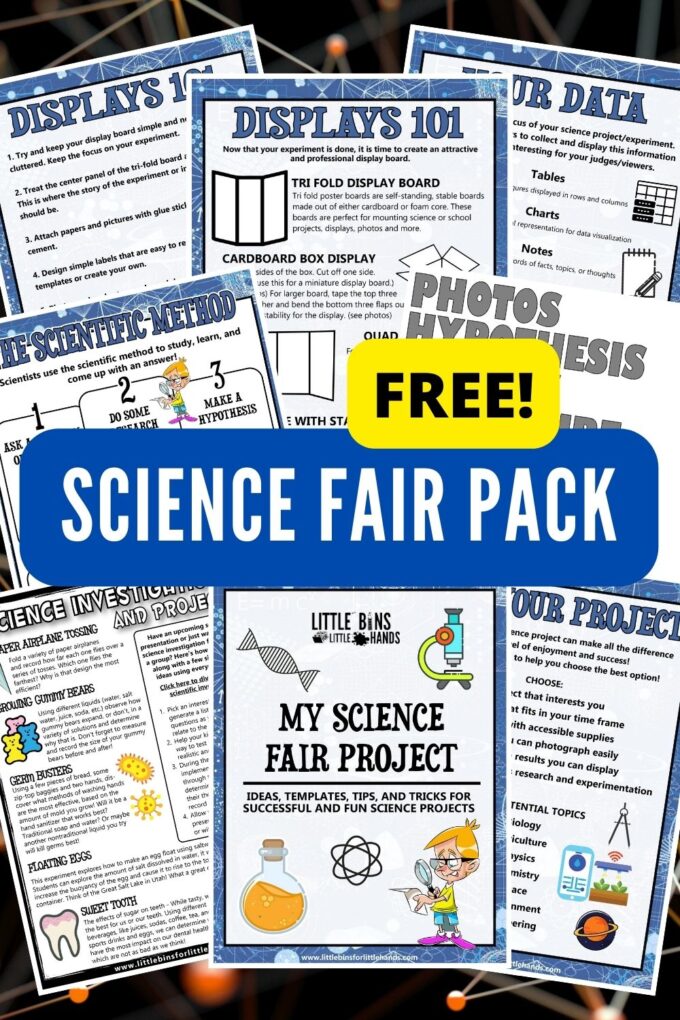
~ Projects to Try Now! ~


The Homeschool Resource Room
creative ideas, practical advice, genuine support

Science Project Research: 10 Engaging Ideas for your Fair!
This post may contain affiliate links. See our disclosure policy for details.
Looking for a research science project? In this blog post, we will explore the world of research based science fair projects specifically tailored for elementary and middle school students.
Science fairs are an exciting way for young minds to delve into the world of scientific discovery, exploration, and creativity. They offer students a unique opportunity to apply critical thinking and research skills, while also having fun. The best science fair projects are often research-based, allowing students to investigate questions and hypotheses, collect data, and draw meaningful conclusions.

The Importance of a Science Project based in Research
Before we delve into project ideas, let’s first understand why a research-based science project is so valuable for young scientists:
- Critical Thinking Skills : Research projects require students to think critically, formulate hypotheses, and design experiments. These skills are essential for future academic success.
- Inquiry-Based Learning : Research projects encourage students to ask questions and seek answers, fostering a sense of curiosity and lifelong learning.
- Real-World Application : Research-based projects connect classroom learning to real-world issues, helping students understand the relevance of science in their lives.
- Data Collection and Analysis : Students learn the importance of collecting and analyzing data, which are skills that can be applied in various subjects and professions.
- Communication Skills : Presenting research findings at a science fair hones communication skills, allowing students to articulate their thoughts and ideas clearly.
Research Science Project Ideas
Now, let’s explore some exciting and age-appropriate research-based science fair project ideas for elementary and middle school students:
1. The Effects of Light on Plant Growth :
Explore how different types of light (natural sunlight, LED, incandescent) affect the growth of plants. Students can set up an experiment with identical plants and varying light sources to measure growth over time.
2. Science Project, Research The Magic of Static Electricity :
Investigate the phenomenon of static electricity by rubbing balloons against different materials and studying how they attract or repel each other. What factors influence static electricity?
3. The Water Cycle in a Bag :
Create a mini water cycle model in a sealed plastic bag. Observe how water evaporates, condenses, and precipitates, mimicking the natural water cycle process.
4. Does Music Affect Plant Growth? :
Explore whether different genres of music can influence plant growth. Set up a controlled experiment with identical plants and varying types of music to see if they grow at different rates.
5. Science Project, Research The Science of Slime :
Unleash the fascination of chemistry by experimenting with homemade slime. Investigate how changing the proportions of ingredients like glue, borax, and water affect the consistency and texture of the slime.
6. Popsicle Bridge Strength :
Build bridges using popsicle sticks and test their strength by gradually adding weight to the bridge until it collapses. What design features make a bridge more durable?
7. What Melts Ice the Fastest? :
Examine different substances like salt, sand, and sugar to determine which one melts ice most rapidly. This project helps students understand the science behind ice removal in cold climates.
8. Paper Airplane Aerodynamics :
Investigate the principles of aerodynamics by designing different paper airplanes and testing their flight characteristics. What factors influence the distance a paper airplane can travel?
9. Science Project, Research The Five-Second Rule :
Study the validity of the “five-second rule” – the belief that dropped food is safe to eat if picked up within five seconds. What bacteria are present on different surfaces, and how quickly do they transfer to food?
10. The Mystery of Mold Growth :
Examine how different variables, such as temperature and humidity, affect the growth of mold on slices of bread. Students can also research the health implications of mold.
Science Project Research Process
To ensure the success of your research based science project, it’s important to guide students through the research process:
- Ask a Question : Encourage students to start with a question or a hypothesis.
- Background Research : Provide resources for students to learn more about the topic. Books, websites, and visits to the library can be helpful.
- Experimental Design : Assist students in designing controlled experiments, ensuring they have a control group for comparison.
- Data Collection : Teach students how to collect data accurately using tables, charts, and measurements.
- Data Analysis : Help students analyze their data and draw meaningful conclusions.
- Presentation : Guide students in creating a visually appealing and informative display board for the science fair.
Science Project Research Conclusion
Research-based science fair projects are an excellent way for elementary and middle school students to engage with the scientific method and develop essential life skills. By exploring topics that spark their curiosity and following a structured research process, young scientists can experience the thrill of discovery and the satisfaction of presenting their findings to peers and mentors.
These projects not only prepare students for future academic pursuits but also foster a love for science and the belief that they, too, can contribute to our collective understanding of the world. So, let’s continue to nurture the curiosity of our budding scientists and inspire them to explore the wonders of the natural world through research-based science fair projects.
Related: – Science Fair Project Ideas: 50 Fascinating Ideas! – Project Based Learning Activities: 50 Engaging Ideas! – Scientific Investigation Project Ideas: 10 Projects to Inspire

Ashley helps parents who want to homeschool find the resources they need to successfully teach their children. Ashley is a former teacher, current homeschooler, published author, and designer behind Circle Time with Miss Fox printables as well as the creator of this website, The Homeschool Resource Room.
Discover more from The Homeschool Resource Room
Subscribe now to keep reading and get access to the full archive.
Continue reading
- Skip to primary navigation
- Skip to main content
- Skip to primary sidebar
Teaching Expertise
- Classroom Ideas
- Teacher’s Life
- Deals & Shopping
- Privacy Policy
Research Activities For Middle School: Discussions, Tips, Exploration, And Learning Resources
February 6, 2024 // by Josilyn Markel
Learning to research effectively is an important skill that middle-school-aged students can learn and carry with them for their whole academic careers. The students in question will use these skills for everything from reading news articles to writing a systematic review of their sources. With increased demands on students these days, it’s never too early to introduce these sophisticated research skills.
We’ve collected thirty of the best academic lessons for middle school students to learn about sophisticated research skills that they’ll use for the rest of their lives.
1. Guiding Questions for Research
When you first give a research project to middle school students, it’s important to make sure that they really understand the research prompts. You can use this guiding questions tool with students to help them draw on existing knowledge to properly contextualize the prompt and assignment before they even pick up a pen.
Learn More: Mrs. Spangler in the Middle
2. Teaching Research Essential Skills Bundle
This bundle touches on all the writing skills, planning strategies, and so-called soft skills that students will need to get started on their first research project. These resources are especially geared towards middle school-aged students to help them with cognitive control tasks plus engaging and active lessons.
Learn More: Pinterest
3. How to Develop a Research Question
Before a middle school student can start their research time on task, they have to form a solid research question. This resource features activities for students that will help them identify a problem and then formulate a question that will guide their research project going first.
Learn More: YouTube
4. Note-Taking Skills Infographic
For a strong introduction and/or systematic review of the importance of note-taking, look no further than this infographic. It covers several excellent strategies for taking the most important info from a source, and it also gives tips for using these strategies to strengthen writing skills.
Learn More: Word Counter
5. Guide to Citing Online Sources
One of the more sophisticated research skills is learning to cite sources. These days, the internet is the most popular place to find research sources, so learning the citation styles for making detailed citations for internet sources is an excellent strategy. This is a skill that will stick with middle school students throughout their entire academic careers!
Learn More: Educator’s Technology
6. Guided Student-Led Research Projects
This is a great way to boost communication between students while also encouraging choice and autonomy throughout the research process. This really opens up possibilities for students and boosts student activity and engagement throughout the whole project. The group setup also decreases the demands on students as individuals.
Learn More: The Thinker Builder
7. Teaching Students to Fact-Check
Fact-checking is an important meta-analytic review skill that every student needs. This resource introduces probing questions that students can ask in order to ensure that the information they’re looking at is actually true. This can help them identify fake news, find more credible sources, and improve their overall sophisticated research skills.
Learn More: Just Add Students
8. Fact-Checking Like a Pro
This resource features great teaching strategies (such as visualization) to help alleviate the demands on students when it comes to fact-checking their research sources. It’s perfect for middle school-aged students who want to follow the steps to make sure that they’re using credible sources in all of their research projects, for middle school and beyond!
9. Website Evaluation Activity
With this activity, you can use any website as a backdrop. This is a great way to help start the explanation of sources that will ultimately lead to helping students locate and identify credible sources (rather than fake news). With these probing questions, students will be able to evaluate websites effectively.
10. How to Take Notes in Class
This visually pleasing resource tells students everything they need to know about taking notes in a classroom setting. It goes over how to glean the most important information from the classroom teacher, and how to organize the info in real-time, and it gives tips for cognitive control tasks and other sophisticated research skills that will help students throughout the research and writing process.
Learn More: Visualistan
11. Teaching Research Papers: Lesson Calendar
If you have no idea how you’re going to cover all the so-called soft skills, mini-lessons, and activities for students during your research unit, then don’t fret! This calendar breaks down exactly what you should be teaching, and when. It introduces planning strategies, credible sources, and all the other research topics with a logical and manageable flow.
Learn More: Discover Hub Pages
12. Google Docs Features for Teaching Research
With this resource, you can explore all of the handy research-focused features that are already built into Google Docs! You can use it to build activities for students or to make your existing activities for students more tech-integrated. You can use this tool with students from the outset to get them interested and familiar with the Google Doc setup.
13. Using Effective Keywords to Search the Internet
The internet is a huge place, and this vast amount of knowledge puts huge demands on students’ skills and cognition. That’s why they need to learn how to search online effectively, with the right keywords. This resource teaches middle school-aged students how to make the most of all the search features online.
Learn More: Teachers Pay Teachers
14. How to Avoid Plagiarism: “Did I Plagiarize?”
This student activity looks at the biggest faux pas in middle school research projects: plagiarism. These days, the possibilities for students to plagiarize are endless, so it’s important for them to learn about quotation marks, paraphrasing, and citations. This resource includes information on all of those and in a handy flow chart to keep them right!
Learn More: Twitter
15. 7 Tips for Recognizing Bias
This is a resource to help middle school-aged students recognize the differences between untrustworthy and credible sources. It gives a nice explanation of sources that are trustworthy and also offers a source of activities that students can use to test and practice identifying credible sources.
Learn More: We Are Teachers
16. UNESCO’s Laws for Media Literacy
This is one of those great online resources that truly focuses on the students in question, and it serves a larger, global goal. It offers probing questions that can help middle school-aged children determine whether or not they’re looking at credible online resources. It also helps to strengthen the so-called soft skills that are necessary for completing research.
Learn More: SLJ Blogs
17. Guide for Evaluating a News Article
Here are active lessons that students can use to learn more about evaluating a news article, whether it’s on a paper or online resource. It’s also a great tool to help solidify the concept of fake news and help students build an excellent strategy for identifying and utilizing credible online sources.
Learn More: Valencia College
18. Middle School Research Projects Middle School Students Will Love
Here is a list of 30 great research projects for middle schoolers, along with cool examples of each one. It also goes through planning strategies and other so-called soft skills that your middle school-aged students will need in order to complete such projects.
Learn More: Madly Learning
19. Teaching Analysis with Body Biographies
This is a student activity and teaching strategy all rolled into one! It looks at the importance of research and biographies, which brings a human element to the research process. It also helps communication between students and helps them practice those so-called soft skills that come in handy while researching.
Learn More: Study All Knight
20. Top Tips for Teaching Research in Middle School
When it comes to teaching middle school research, there are wrong answers and there are correct answers. You can learn all the correct answers and teaching strategies with this resource, which debunks several myths about teaching the writing process at the middle school level.
Learn More: Teaching ELA with Joy
21. Teaching Students to Research Online: Lesson Plan
This is a ready-made lesson plan that is ready to present. You don’t have to do tons of preparation, and you’ll be able to explain the basic and foundational topics related to research. Plus, it includes a couple of activities to keep students engaged throughout this introductory lesson.
Learn More: Kathleen Morris
22. Project-Based Learning: Acceptance and Tolerance
This is a series of research projects that look at specific problems regarding acceptance and tolerance. It offers prompts for middle school-aged students that will get them to ask big questions about themselves and others in the world around them.
Learn More: Sandy Cangelosi
23. 50 Tiny Lessons for Teaching Research Skills in Middle School
These fifty mini-lessons and activities for students will have middle school-aged students learning and applying research skills in small chunks. The mini-lessons approach allows students to get bite-sized information and focus on mastering and applying each step of the research process in turn. This way, with mini-lessons, students don’t get overwhelmed with the whole research process at once. In this way, mini-lessons are a great way to teach the whole research process!
24. Benefits of Research Projects for Middle School Students
Whenever you feel like it’s just not worth it to go to the trouble to teach your middle school-aged students about research, let this list motivate you! It’s a great reminder of all the great things that come with learning to do good research at an early age.
Learn More: Thrive in Grade Five
25. Top 5 Study and Research Skills for Middle Schoolers
This is a great resource for a quick and easy overview of the top skills that middle schoolers will need before they dive into research. It outlines the most effective tools to help your students study and research well, throughout their academic careers.
Learn More: Meagan Gets Real
26. Research with Informational Text: World Travelers
This travel-themed research project will have kids exploring the whole world with their questions and queries. It is a fun way to bring new destinations into the research-oriented classroom.
Learn More: The Superhero Teacher
27. Project-Based Learning: Plan a Road Trip
If you want your middle school-aged students to get into the researching mood, have them plan a road trip! They’ll have to examine the prompt from several angles and collect data from several sources before they can put together a plan for an epic road trip.
Learn More: Appletastic Learning
28. Methods for Motivating Writing Skills
When your students just are feeling up to the task of research-based writing, it’s time to break out these motivational methods. With these tips and tricks, you’ll be able to get your kids in the mood to research, question, and write!
29. How to Set Up a Student Research Station
This article tells you everything you need to know about a student center focused on sophisticated research skills. These student center activities are engaging and fun, and they touch on important topics in the research process, such as planning strategies, fact-checking skills, citation styles, and some so-called soft skills.
Learn More: Upper Elementary Snapshots
30. Learn to Skim and Scan to Make Research Easier
These activities for students are geared towards encouraging reading skills that will ultimately lead to better and easier research. The skills in question? Skimming and scanning. This will help students read more efficiently and effectively as they research from a variety of sources.
Science Research Topics for Middle School
Kimberly turtenwald.

Teachers use research papers to make their students think more in depth about scientific subjects. Science projects encourage middle school students to use their writing and research skills. One of the first steps for writing a research paper is to find a topic you would like to write about. A good science research topic for middle school asks a question about the topic and offers plenty of information a student can use to answer that question.
Explore this article
- How Do Airplanes Fly?
- The Ocean and the Moon
- Greenhouse Effect
1 How Do Airplanes Fly?
When you look at an airplane, you may wonder how something so large and heavy can fly so easily into the air. Physics and aerodynamics play a big part in how and why airplanes are capable of flying. Detail how airplanes are designed in a way that helps them to fly despite their size and weight. You can compare the basic shape of the airplane with that of a bird and the similarities and differences between the way they fly.
2 The Ocean and the Moon
The tides of the ocean are easily observed, but the big question is, how do they work? The moon's gravitational pull is actually the reason why the tides go in and out. A research paper on this topic requires you to research scientific facts and observations that allow you see how the moon's gravity causes the tides. You will then describe that process as a part of your research paper. You can also do experiments to include in your report.
Fossils are the remains of ancient creatures that have been immortalized in stone over time. A research paper on fossils can help readers to understand how these rocks have been formed and why they bear the markings of creatures from long ago. The process of fossilization is very precise and without certain conditions, it will not work properly. A middle school research paper on this topic can detail this process and also include information on the many different types of fossils that can be found.
The way we look is determined by our genetic makeup. This genetic makeup is created by the genetic material -- the DNA -- we inherit from our parents, half from each. For this research topic, you can use your own family or a friend's family to show how traits can be passed on and how genetics work. Pick traits that are obvious to others, such as hair and eye color or earlobe shapes. Create a chart as part of your research paper to show the relationship between the parents' looks and those of their children.
5 Greenhouse Effect
The greenhouse effect is something that affects everyone. The weather in the world is changing and many of these changes are due to the changes in the atmosphere. A research paper on this topic allows you to evaluate the reasons why these changes are taking place and what can be done by humans to help slow down these effects. You can also address the impacts that will happen over time if the greenhouse effect continues in the direction it is currently going.
- 1 University of California Museum of Paleontology
- 2 Education.com: Explore Genetics by Finding Family Traits
- 3 Science Made Simple: Science Projects, Ideas & Topics
- 4 Science Buddies: Is It Getting Hot in Here? Investigate the Greenhouse Effect
About the Author
Kimberly Turtenwald began writing professionally in 2000. She has written content for various websites, including Lights 2 You, Online Consultation, Corpus Personal Injury and more. Turtenwald studied editing and publishing at Wisconsin Lutheran College.
Related Articles

Why Does the Moon Change Colors?

The Effect of the Population on the Ecosystem

The Disadvantages of Gamma Rays

Science Research Paper Topic Ideas

Fossil Lab Activities for Middle School

Difference Between Tropical & Temperate Deserts

What Risks Do Marine Biologists Have?

Experiments for Kids on the Skeletal System

What Is Soy?

How to Make Fish Oil

Water & Food Coloring Experiments

What Are Whales Used for Today?

Elementary Science Trivia Questions

Why Is the Sun So Bright?

Kindergarten Weather Lesson Plan Activities

How to Make a Homemade Trap for Mosquitoes

Crucial Environmental Problems Affecting the Ocean

Waterfall School Project Ideas

School Projects With Cactus

Raindrop Art Projects for Preschoolers
Regardless of how old we are, we never stop learning. Classroom is the educational resource for people of all ages. Whether you’re studying times tables or applying to college, Classroom has the answers.
- Accessibility
- Terms of Use
- Privacy Policy
- Copyright Policy
- Manage Preferences
© 2020 Leaf Group Ltd. / Leaf Group Media, All Rights Reserved. Based on the Word Net lexical database for the English Language. See disclaimer .

ChatGPT for Teachers
Trauma-informed practices in schools, teacher well-being, cultivating diversity, equity, & inclusion, integrating technology in the classroom, social-emotional development, covid-19 resources, invest in resilience: summer toolkit, civics & resilience, all toolkits, degree programs, trauma-informed professional development, teacher licensure & certification, how to become - career information, classroom management, instructional design, lifestyle & self-care, online higher ed teaching, current events, how to help middle school students develop research skills.

As the research skills you teach middle school students can last them all their lives, it’s essential to help them develop good habits early in their school careers.
Research skills are useful in nearly every subject, whether it’s English, math, social studies or science, and they will continue to pay off for students every day of their schooling. Understanding the most important research skills that middle school students need will help reach these kids and make a long-term difference.
The research process
It is important for every student to understand that research is actually a process rather than something that happens naturally. The best researchers develop a process that allows them to fully comprehend the ideas they are researching and also turn the data into information that is usable for whatever the end purpose may be. Here is an example of a research process that you may consider using when teaching research skills in your middle school classroom:
- Form a question : Research should be targeted; develop a question you want to answer before progressing any further.
- Decide on resources : Not every resource is good for every question/problem. Identify the resources that will work best for you.
- Gather raw data : First, gather information in its rawest form; do not attempt to make sense of it at this point.
- Sort the data : After you have the information in front of you, decide what is important to you and how you will use it. Not all data will be reliable or worthwhile.
- Process information : Turn the data into usable information. This processing step may take longer than the rest combined. This is where you really see your data shape into something exciting.
- Create a final piece : This is where you would write a research paper, create a project or build a graph or other visual piece with your information. This may or may not be a formal document.
- Evaluate : Look back on the process. Where did you experience success and failure? Did you find an answer to your question?
This process can be adjusted to suit the needs of your particular classroom or the project you are working on. Just remember that the goal is not only to find the data for this particular project, but to teach your students research skills that will help them in the long run.
Research is a very important part of the learning process as well as being useful in real-life once the student graduates. Middle school is a great time to develop these skills as many high school teachers expect that students already have this knowledge.
Students who are well-prepared as researchers will be able to handle nearly any assignment that comes their way. Finding new ways to teach research skills to middle school students need will be a challenge, but the results are well worth it as you see your students succeed in your classroom and set the stage for further success throughout their schooling experience.
You may also like to read
- Web Research Skills: Teaching Your Students the Fundamentals
- Building Math Skills in High School Students
- How to Help High School Students with Career Research
- Five Free Websites for Students to Build Research Skills
- Homework in Middle School: Building a Foundation for Study Skills
- 5 Novels for Middle School Students that Celebrate Diversity
Categorized as: Tips for Teachers and Classroom Resources
Tagged as: Engaging Activities , Middle School (Grades: 6-8)
- Math Teaching Resources | Classroom Activitie...
- Online & Campus Doctorate (EdD) in Organizati...
- Master's in Reading and Literacy Education
Read our research on: Gun Policy | International Conflict | Election 2024
Regions & Countries
Political typology quiz.
Notice: Beginning April 18th community groups will be temporarily unavailable for extended maintenance. Thank you for your understanding and cooperation.
Where do you fit in the political typology?
Are you a faith and flag conservative progressive left or somewhere in between.

Take our quiz to find out which one of our nine political typology groups is your best match, compared with a nationally representative survey of more than 10,000 U.S. adults by Pew Research Center. You may find some of these questions are difficult to answer. That’s OK. In those cases, pick the answer that comes closest to your view, even if it isn’t exactly right.
About Pew Research Center Pew Research Center is a nonpartisan fact tank that informs the public about the issues, attitudes and trends shaping the world. It conducts public opinion polling, demographic research, media content analysis and other empirical social science research. Pew Research Center does not take policy positions. It is a subsidiary of The Pew Charitable Trusts .

IMAGES
VIDEO
COMMENTS
Our middle school projects are written and tested by scientists and are specifically created for use by students in the middle school grades. Students can choose to follow the science experiment as written or put their own spin on the project. For a personalized list of science projects, middle schoolers can use the Science Buddies Topic ...
The Lumiere Junior Explorer Program is a program for middle school students to work one-on-one with a mentor to explore their academic interests and build a project they are passionate about. Our mentors are scholars from top research universities such as Harvard, MIT, Stanford, Yale, Duke and LSE.
Learn more: Solar Oven. 5. Build a Helping Hand. In this captivating middle school science experiment, students will have the opportunity to construct their very own "Helping Hand" device. Learn more: Science Buddies. 6. DIY Lung Model. Make a Lung Model - STEM activity. Watch on.
Middle School Science Projects. (404 results) Science Buddies' middle school science projects are the perfect way for middle school students to have fun exploring science, technology, engineering, and math (STEM). Our middle school projects are written and tested by scientists and are specifically created for use by students in the middle ...
This allowed them to let their creativity kick in and, as a result, the projects have been so much better! There are 10 major STEM projects that I do in middle school and I have broken them down into three categories: physical science, life science and environmental science. All of the projects involve very little extra materials and I promote ...
5 Ways to Integrate ResearchQuest into Your Classroom Now. 1. Exploring Environmental Stewardship Through Natural and Synthetic Materials. Dive into the "Artifact Investigation" to explore early ceramics and their impact on both history and ecology. This cross-curricular study is an excellent way to engage students in the scientific method ...
Middle school students can do all right with projects that describe or model phenomena, but if you can answer a question or solve a problem, you will excel. Try to propose a hypothesis and test it. Aim for a typed presentation with visual aids, such as pictures or physical examples. Choose a project you can do fairly quickly to give you time to ...
Starting to work on STEM project ideas in middle school is a great way to excel at science fairs in high school! Read this blog for a few ideas & useful guides! Renewable Energy: Building a Solar Oven. Description: Harness the power of the sun to cook delicious treats with your very own solar oven. Students can construct a simple oven using ...
To achieve its goal, this collaborative project is developing instructional materials for middle school science that support the shifts in practice required to achieve the outcomes called for by the Framework for K-12 Science Education and the Next Generation Science Standards at a large scale. The OpenSciEd Middle School Program development ...
We use the Research Essay Outline worksheet to get started, transferring our well-organized information from the Research Matrix to the outline. I often advise students to begin with the body portion of the essay, leaving the introduction and conclusion for last. This may seem awkward, but the research students have been working on naturally ...
Science and the Natural World. The sciences are a playground of wonder, with an infinity of topics waiting to be explored. Here are some research ideas that can nurture a love for discovery and experimentation: ... Research projects in middle school often blend subjects, such as the integration of art and mathematics when exploring patterns and ...
practitioners across the country, the Middle School Matters Field Guide is a collection of research-based principles, practices, and strategies deemed essential for middle school success. It includes instructional practices derived from the most rigorous research conducted in the middle grades over the past 15 years. Speciically,
2. Introduce real-world STEM careers. A great way to use STEM research projects in middle school classrooms is to connect them with real-world career paths. For example, when students research the safety of autonomous cars, they will also be learning about mechanical engineers, computer scientists, and robotics engineers.
26) Make Ice Cream in a Ziploc Bag _ Such a great hot day activity with a lot of science to discuss. 27) Make Slime! - Instant crowd pleaser! 28) Make Puffy Slime using Shaving Cream - Not as stretchy but a fun, great smelling alternative to regular slime. 29) Make bubble experiments -Everyone loves bubbles!
Middle schoolers love science! These hands-on middle school science experiments can be completed in the classroom or at home, whether you're exploring viscosity, density, liquids, solids, and so much more. Below you'll find a great list of middle school science activities and experiments, including 7th grader science fair project ideas to ...
Now, let's explore some exciting and age-appropriate research-based science fair project ideas for elementary and middle school students: 1. The Effects of Light on Plant Growth: Explore how different types of light (natural sunlight, LED, incandescent) affect the growth of plants. Students can set up an experiment with identical plants and ...
18. Middle School Research Projects Middle School Students Will Love. Here is a list of 30 great research projects for middle schoolers, along with cool examples of each one. It also goes through planning strategies and other so-called soft skills that your middle school-aged students will need in order to complete such projects.
Science projects encourage middle school students to use their writing and research skills. One of the first steps for writing a research paper is to find a topic you would like to write about. ... A middle school research paper on this topic can detail this process and also include information on the many different types of fossils that can be ...
Research skills are useful in nearly every subject, whether it's English, math, social studies or science, and they will continue to pay off for students every day of their schooling. Understanding the most important research skills that middle school students need will help reach these kids and make a long-term difference. The research process
Take our quiz to find out which one of our nine political typology groups is your best match, compared with a nationally representative survey of more than 10,000 U.S. adults by Pew Research Center. You may find some of these questions are difficult to answer. That's OK. In those cases, pick the answer that comes closest to your view, even if ...
6. Research Science Institute (RSI) at MIT. The Research Science Institute (RSI) at MIT is an intensive six-week summer program that brings together exceptionally talented high school students from around the world to engage in cutting-edge scientific research. Under the guidance of experienced mentors, participants work on individual research projects in fields such as mathematics, biology ...